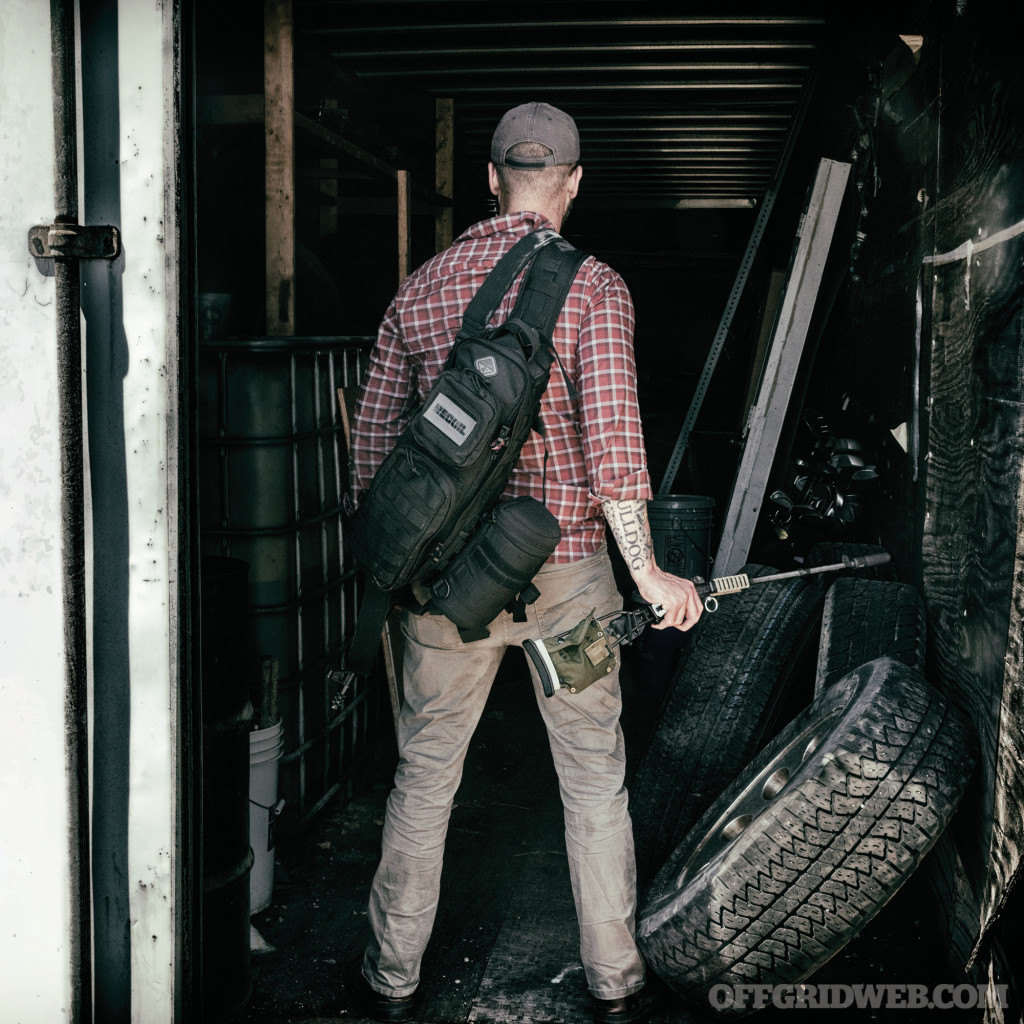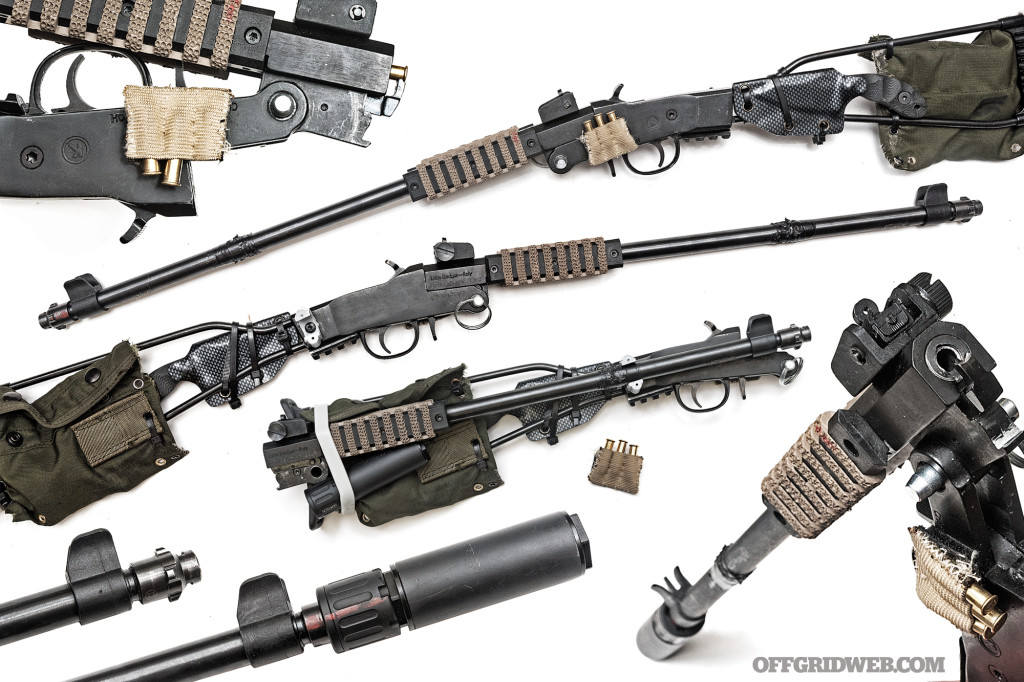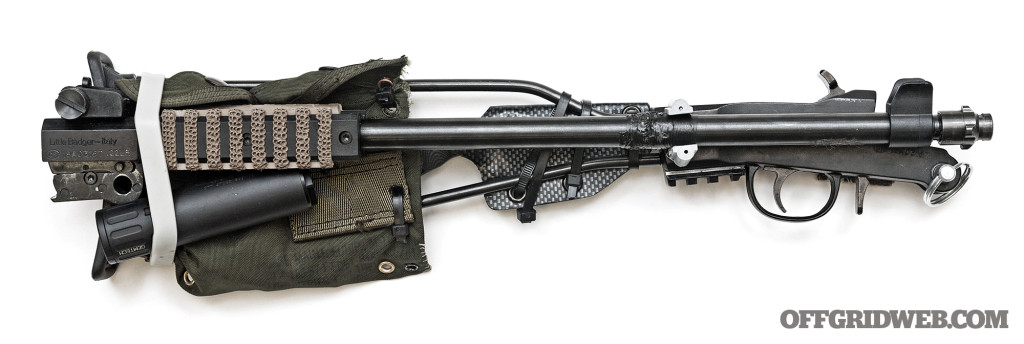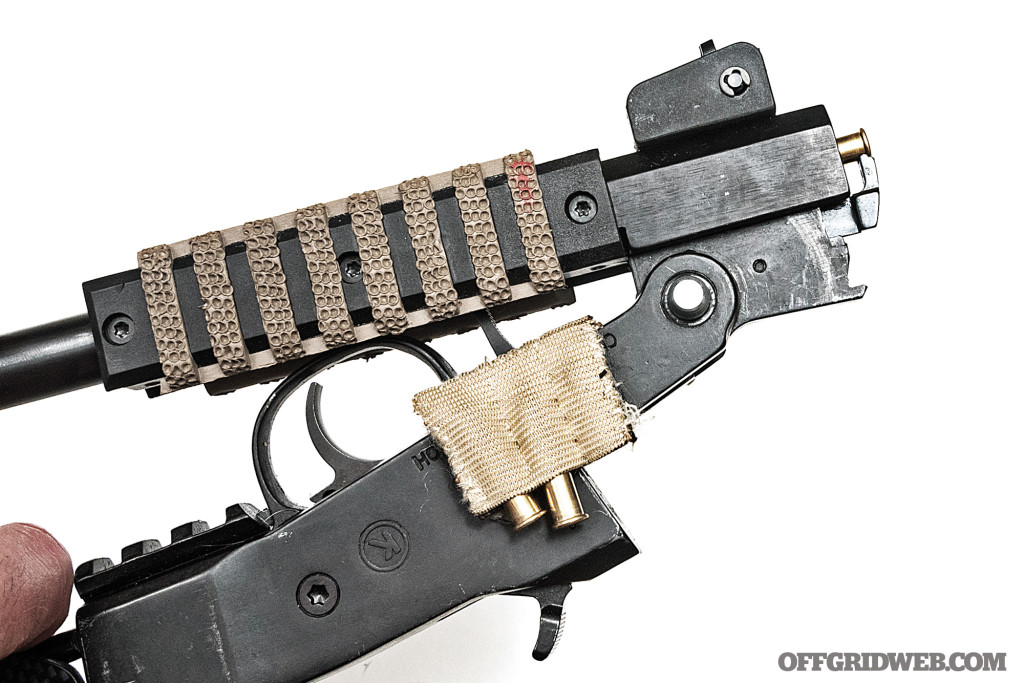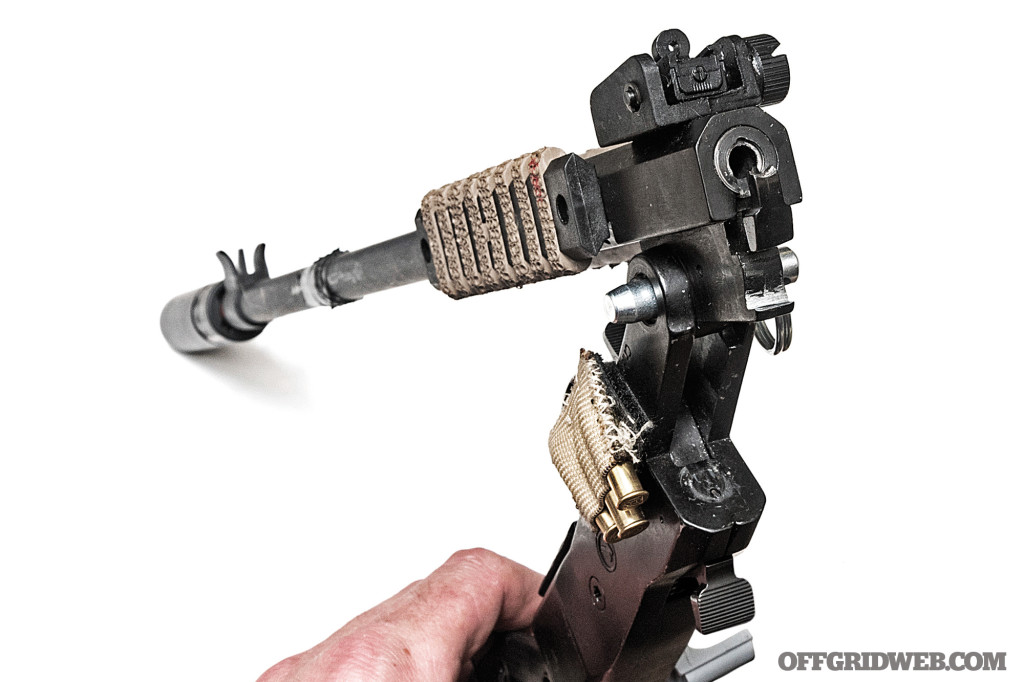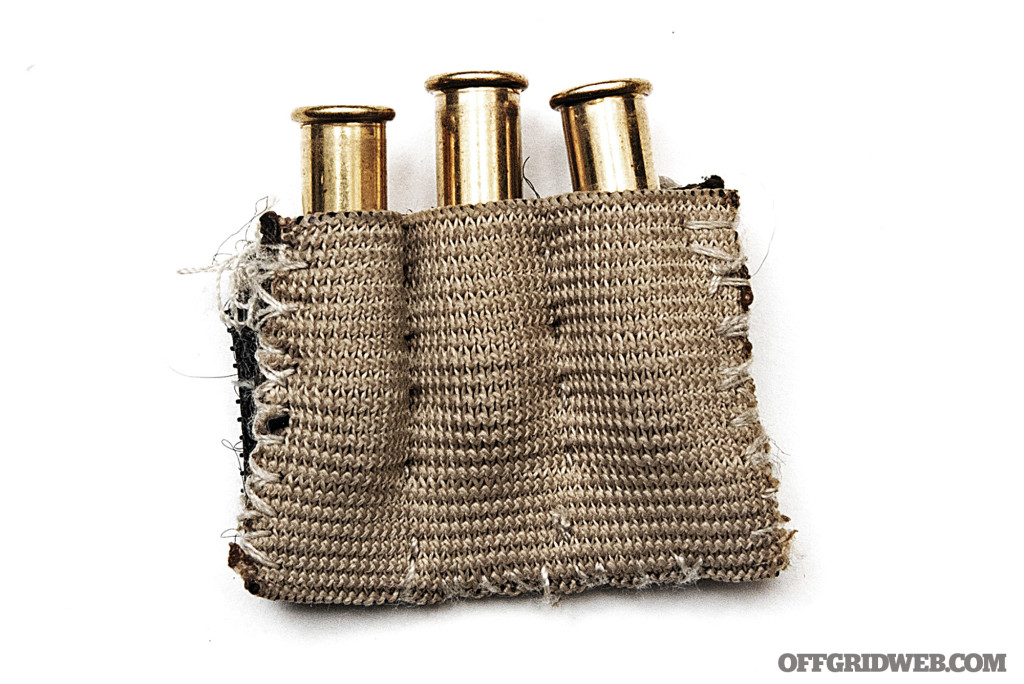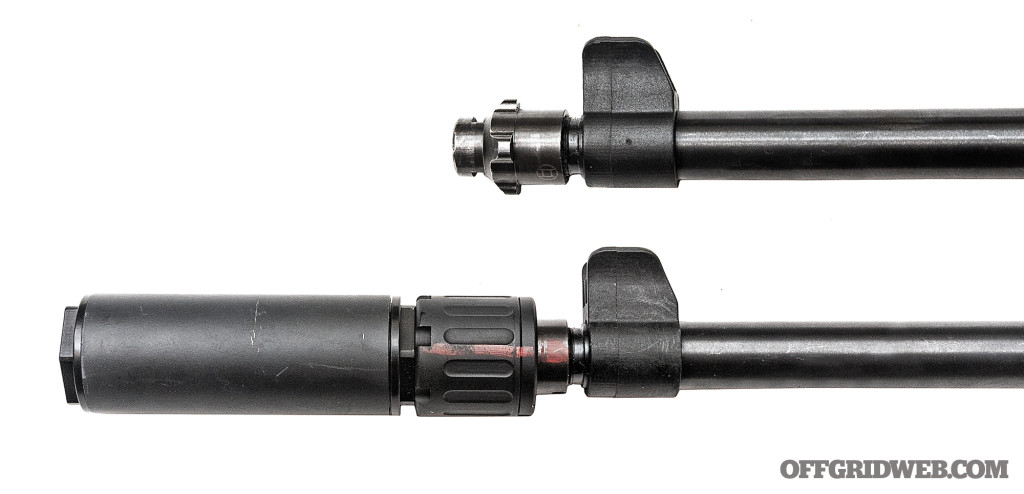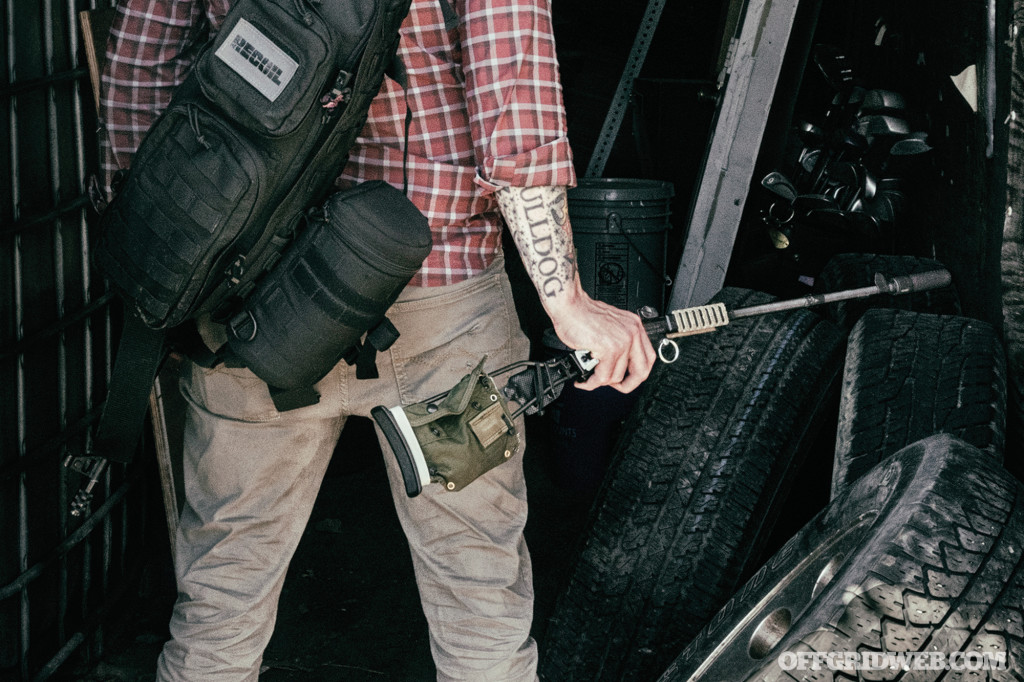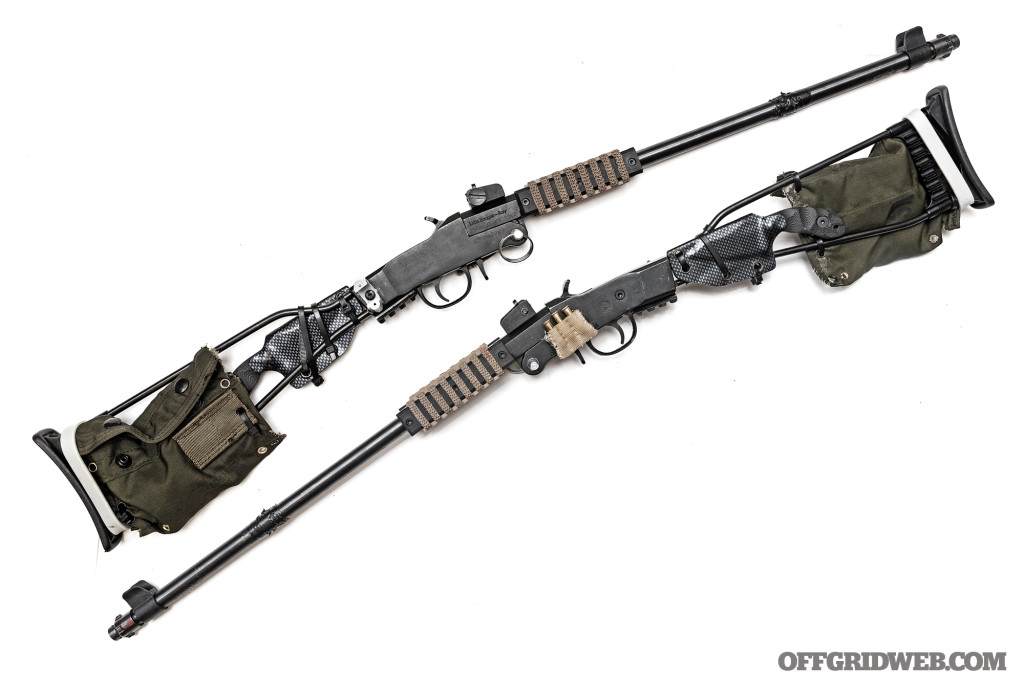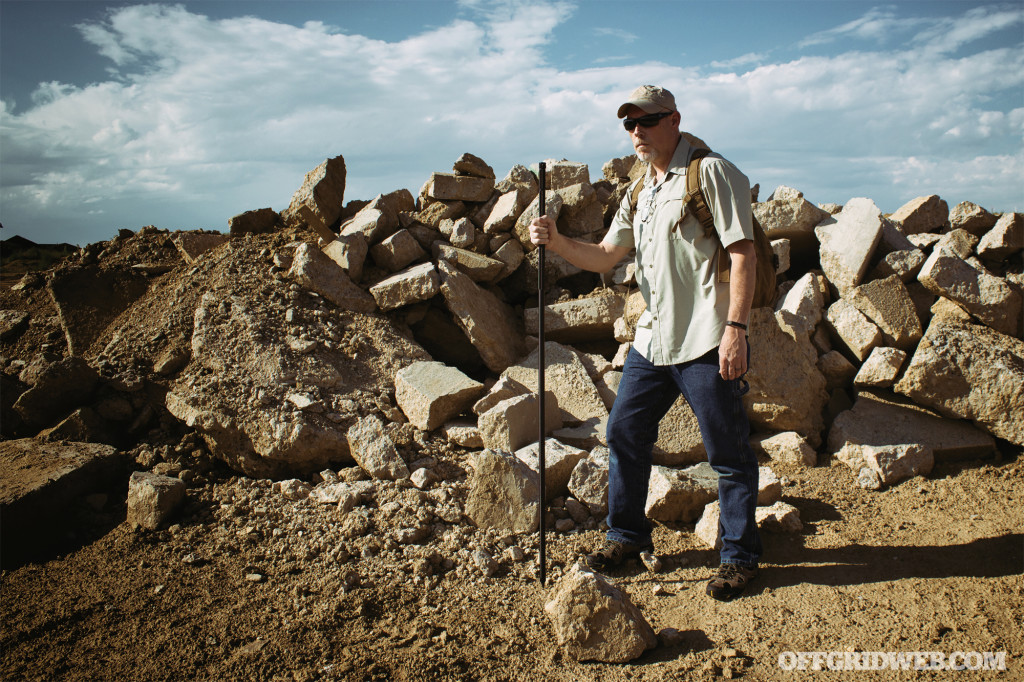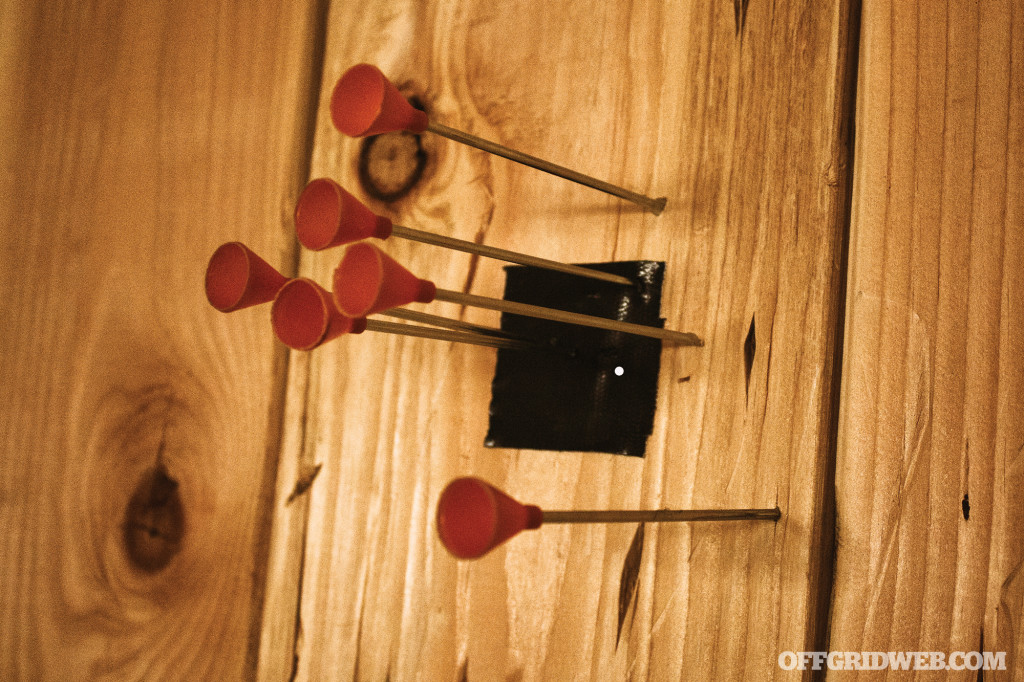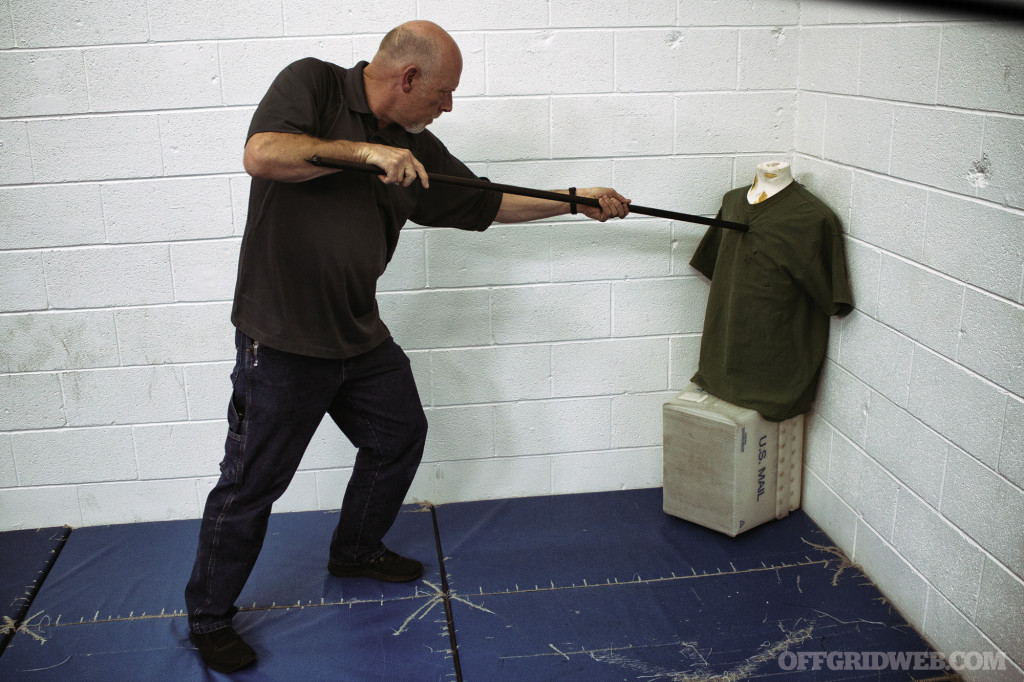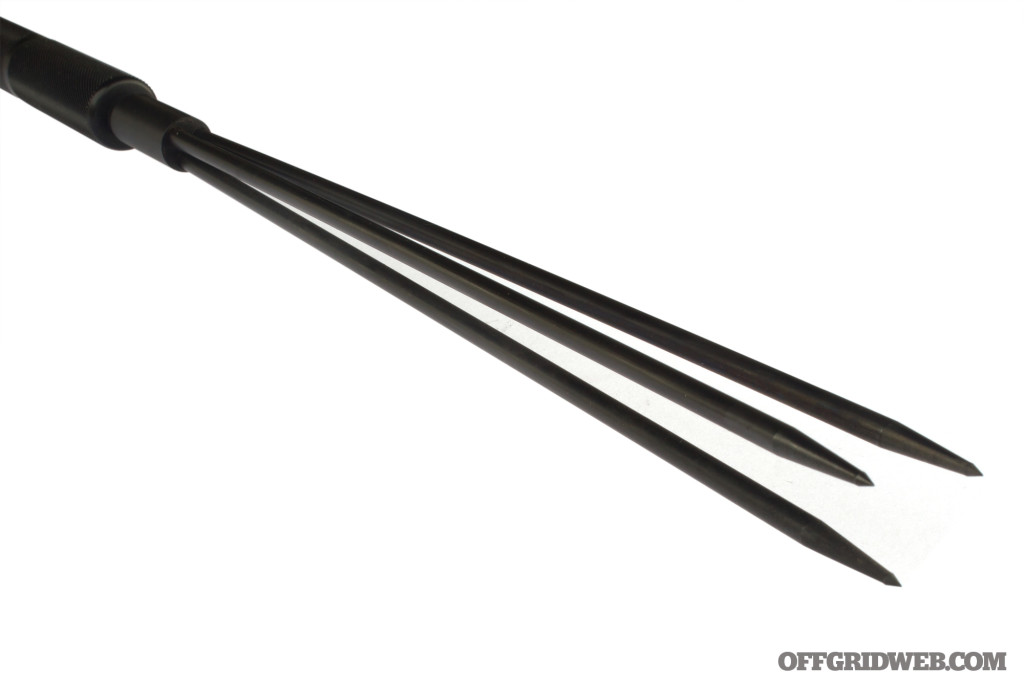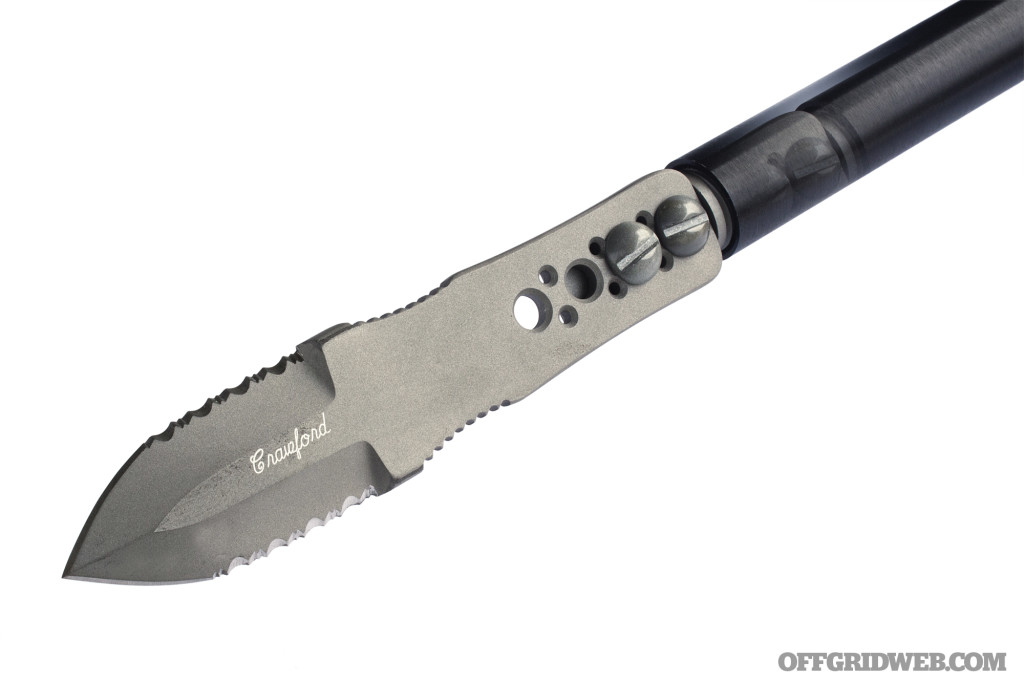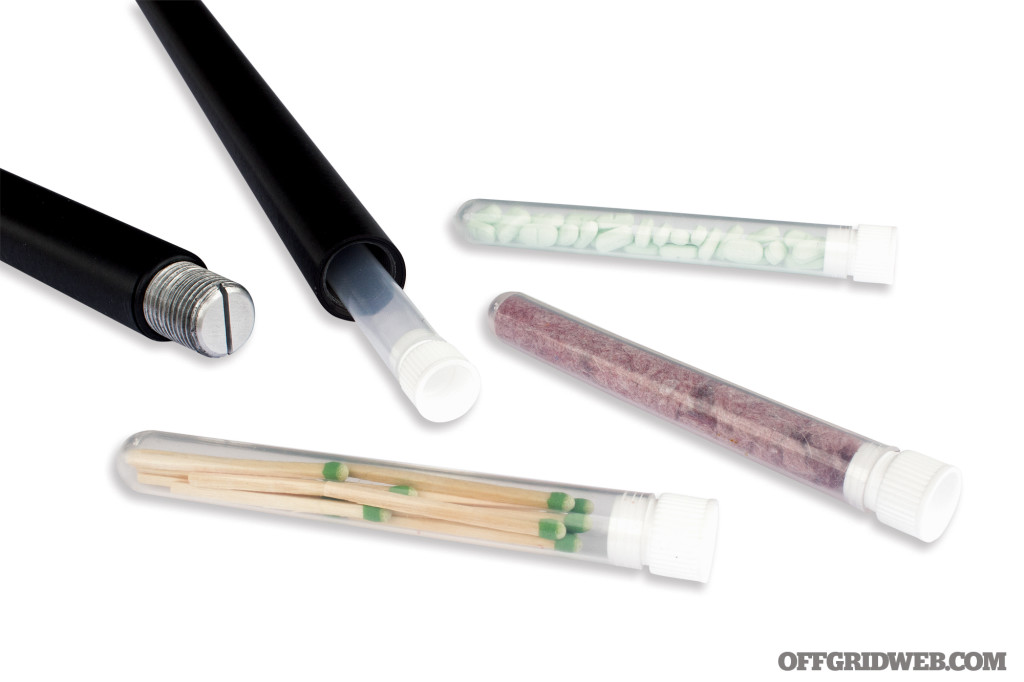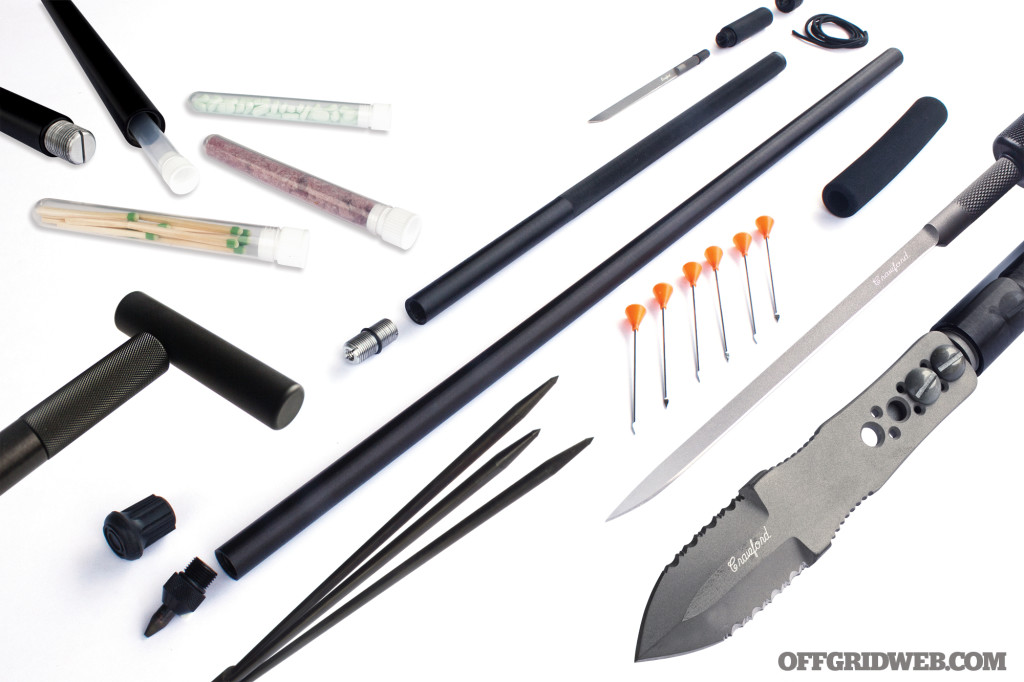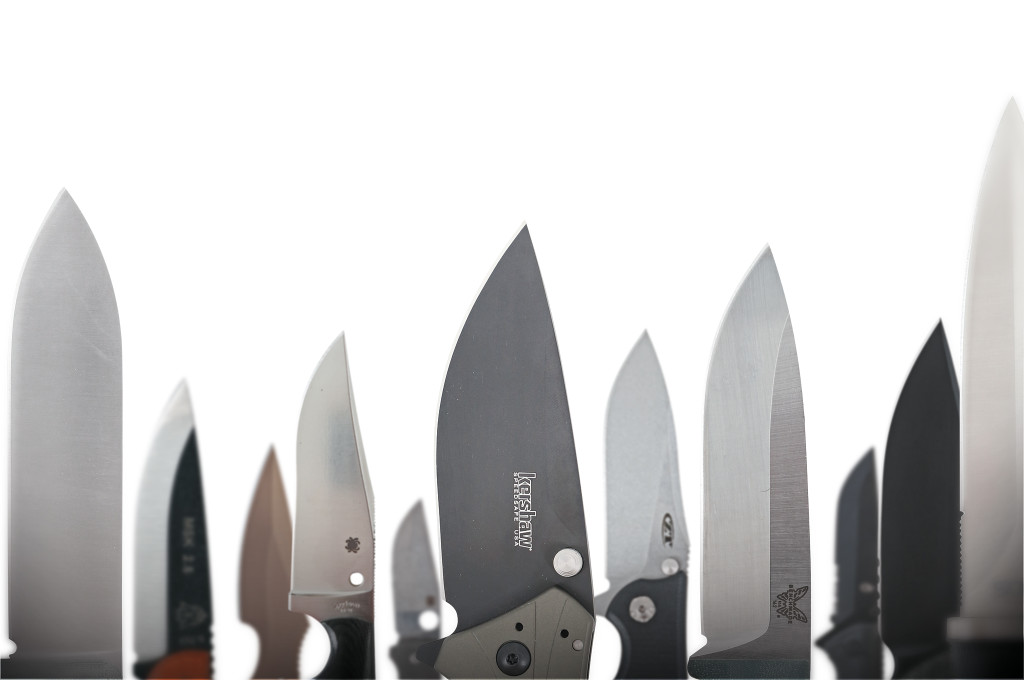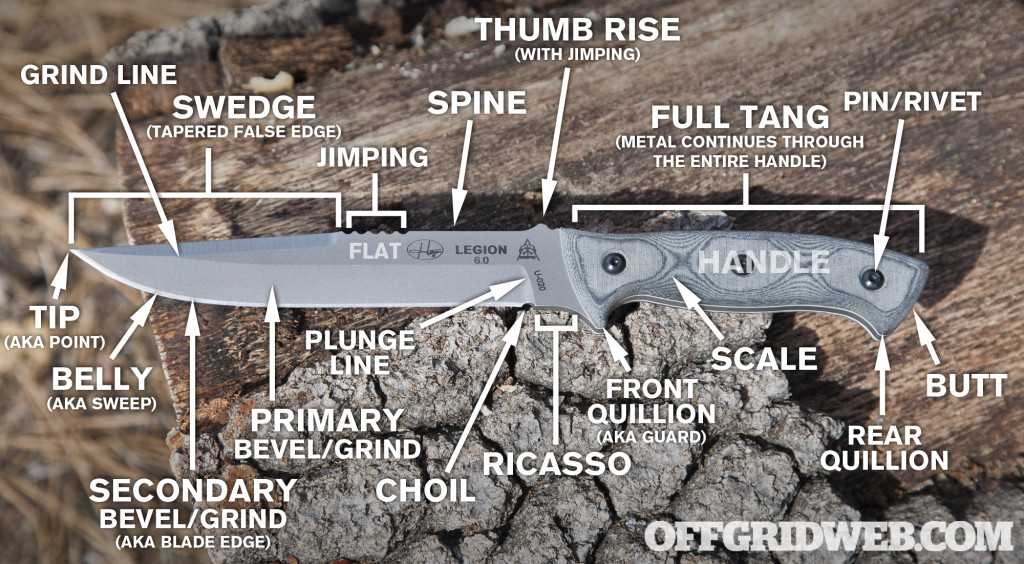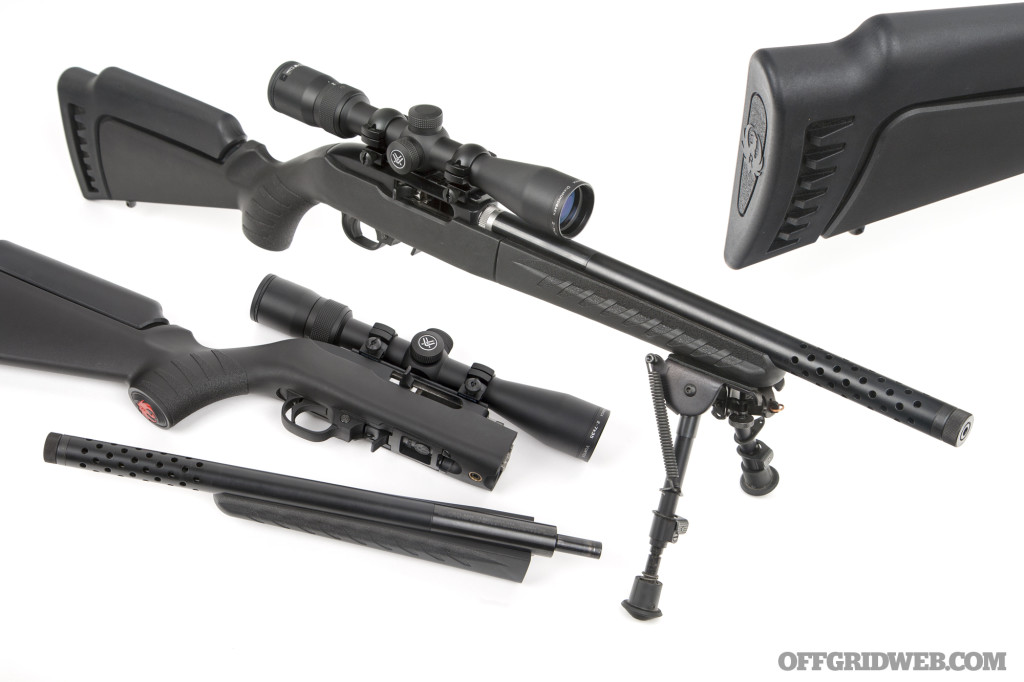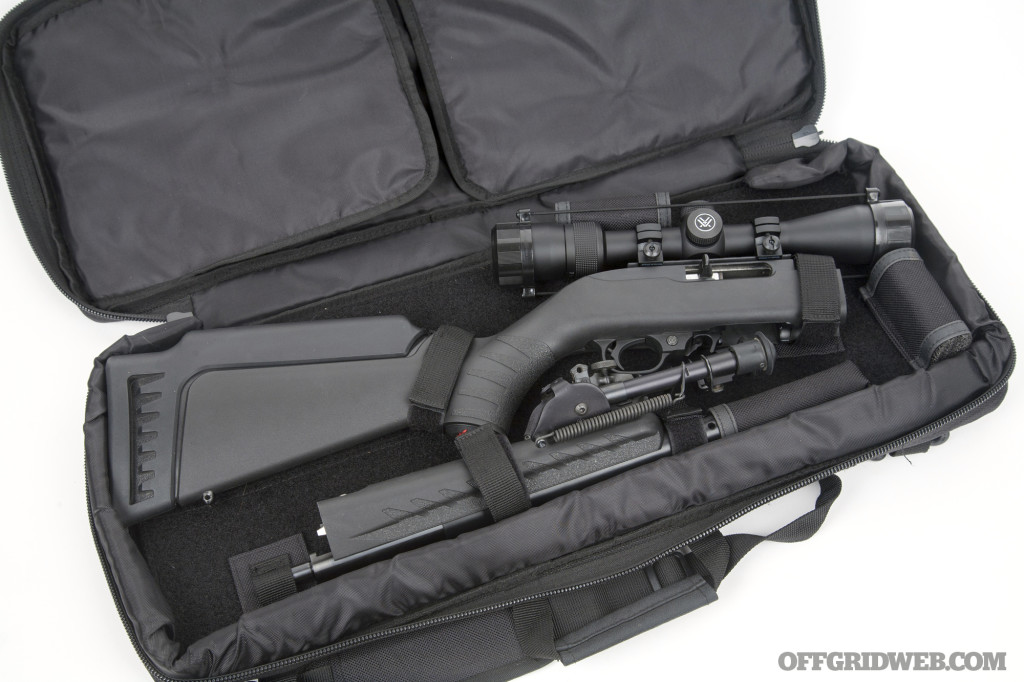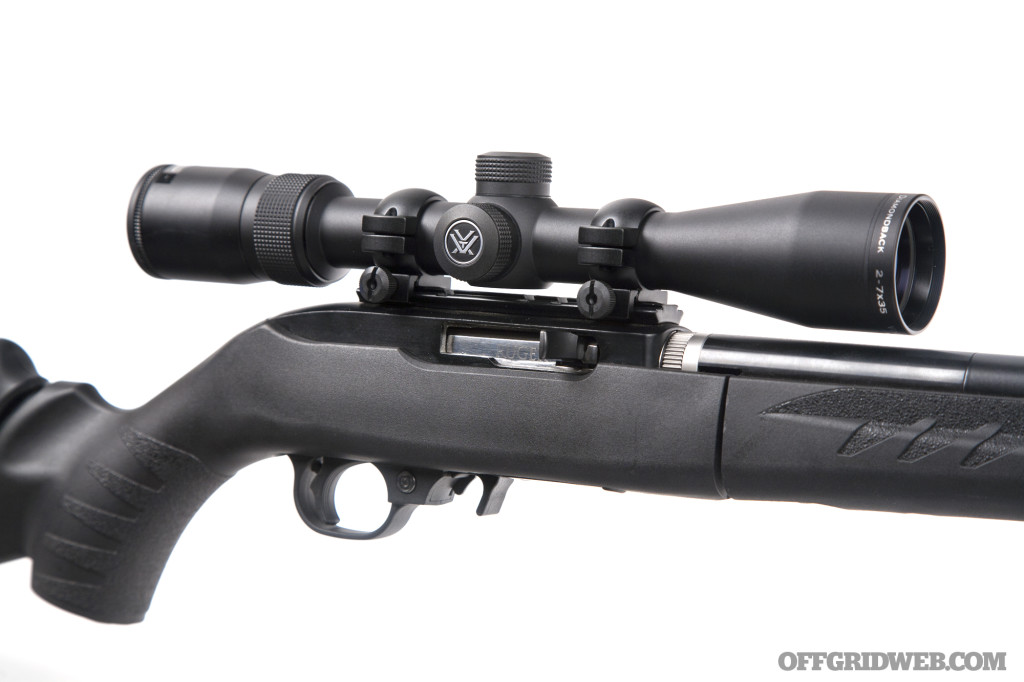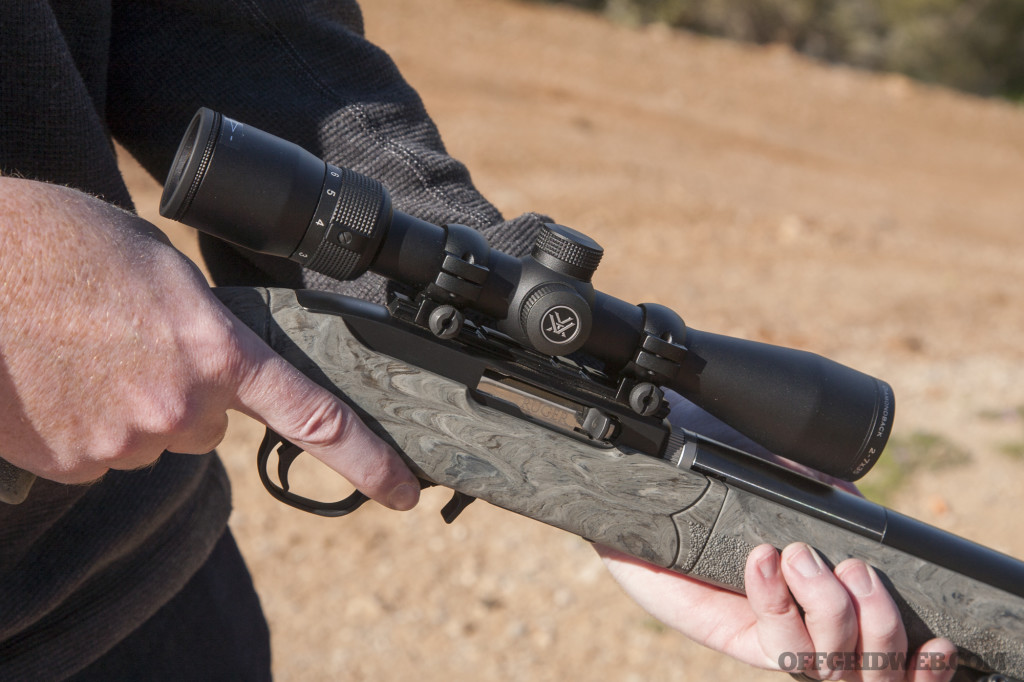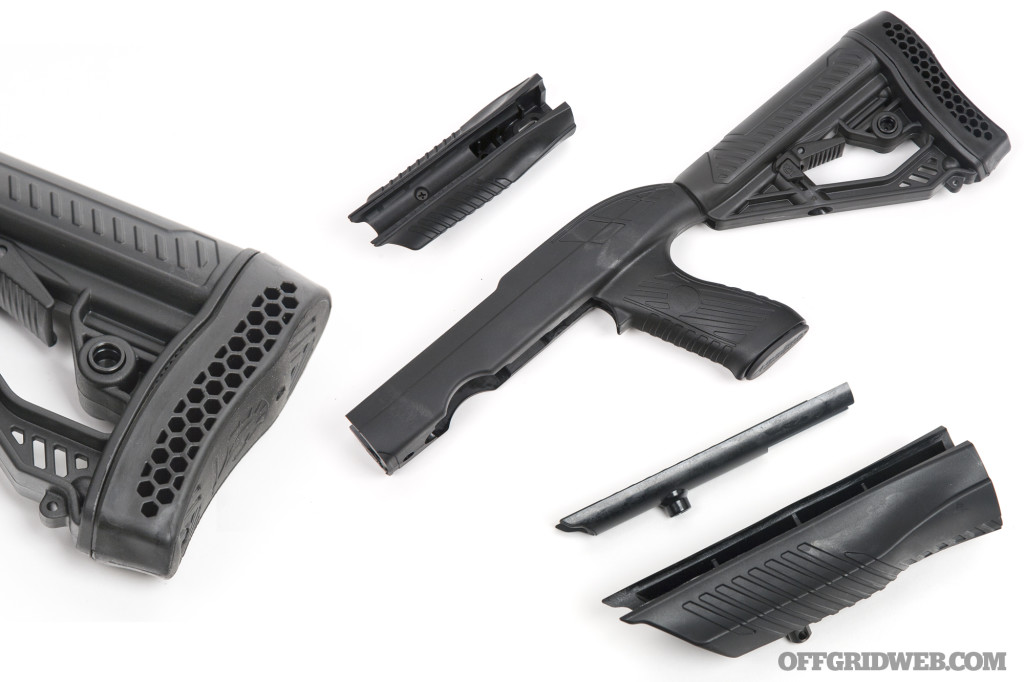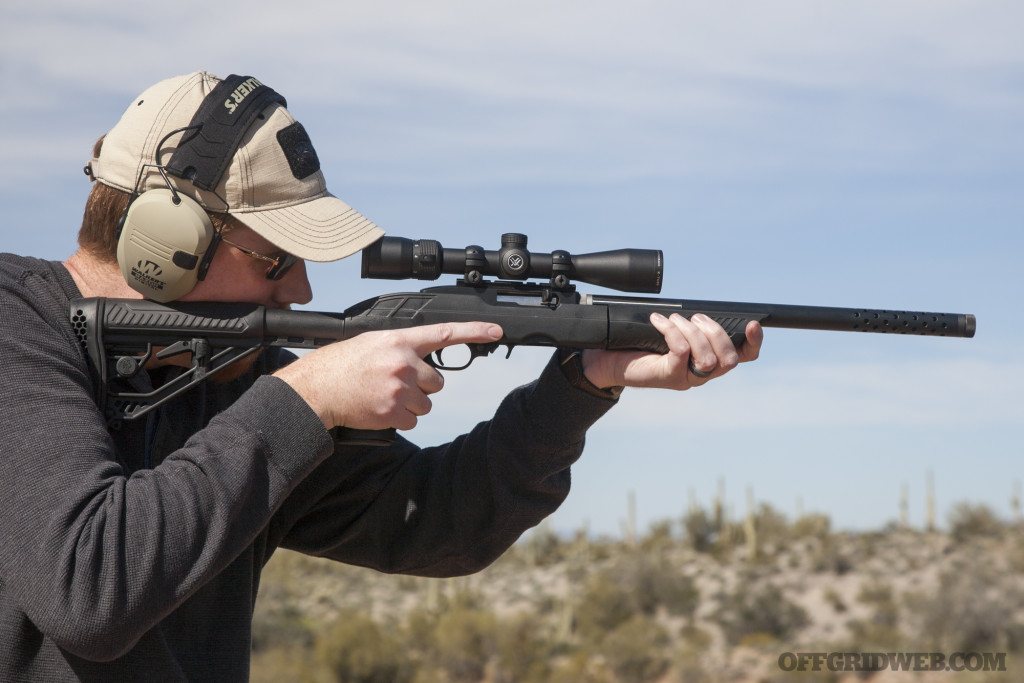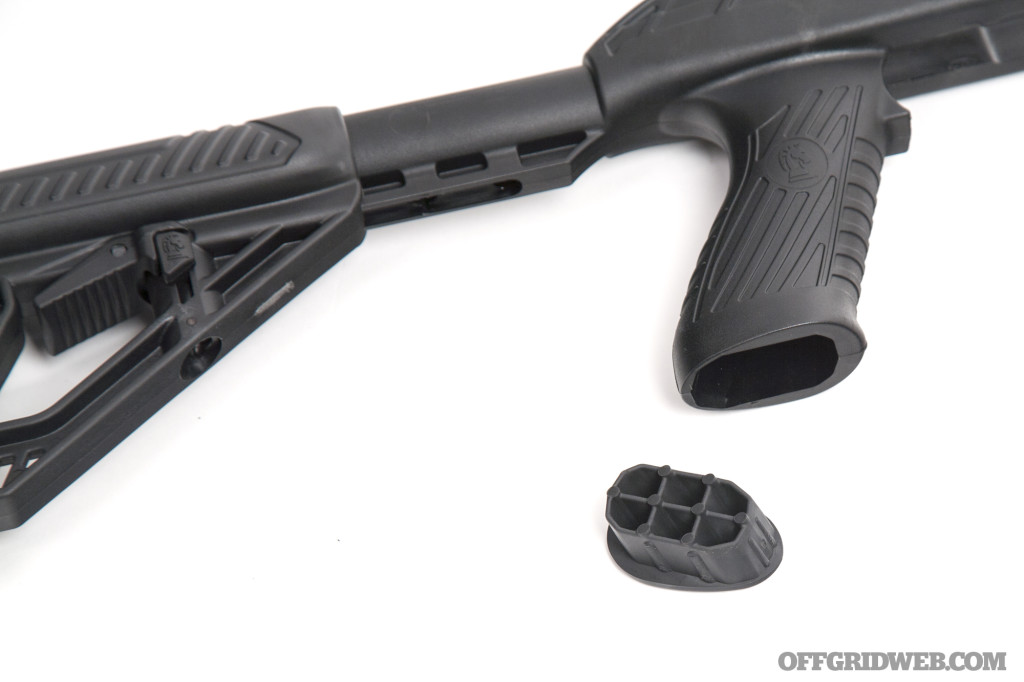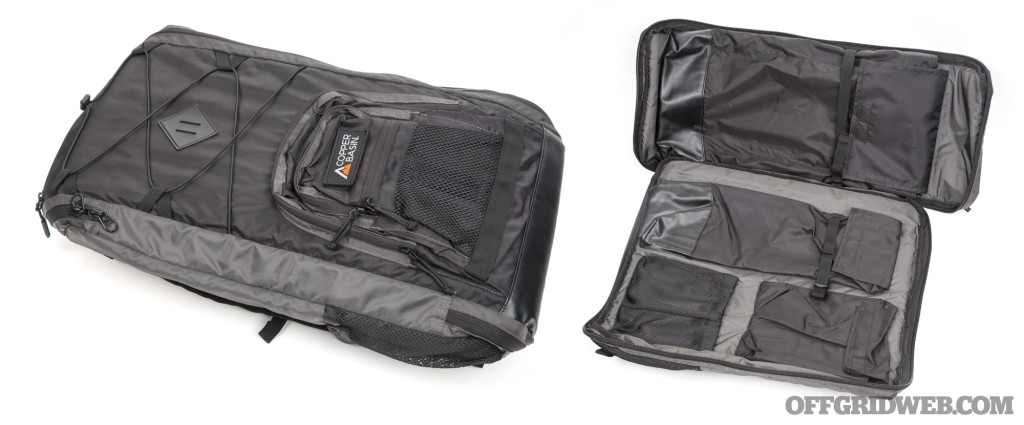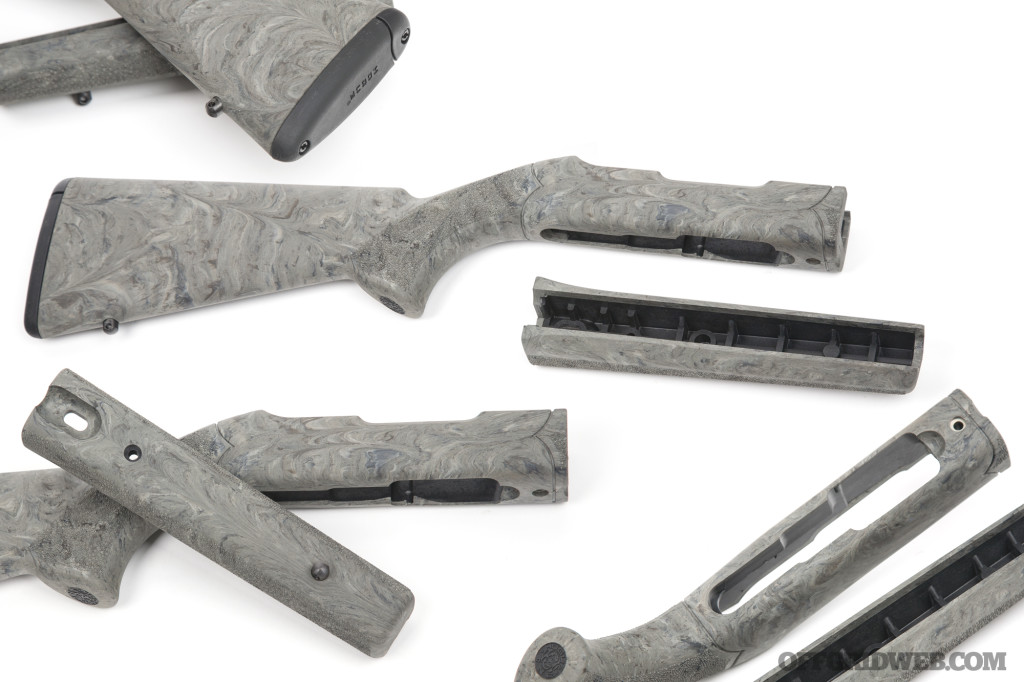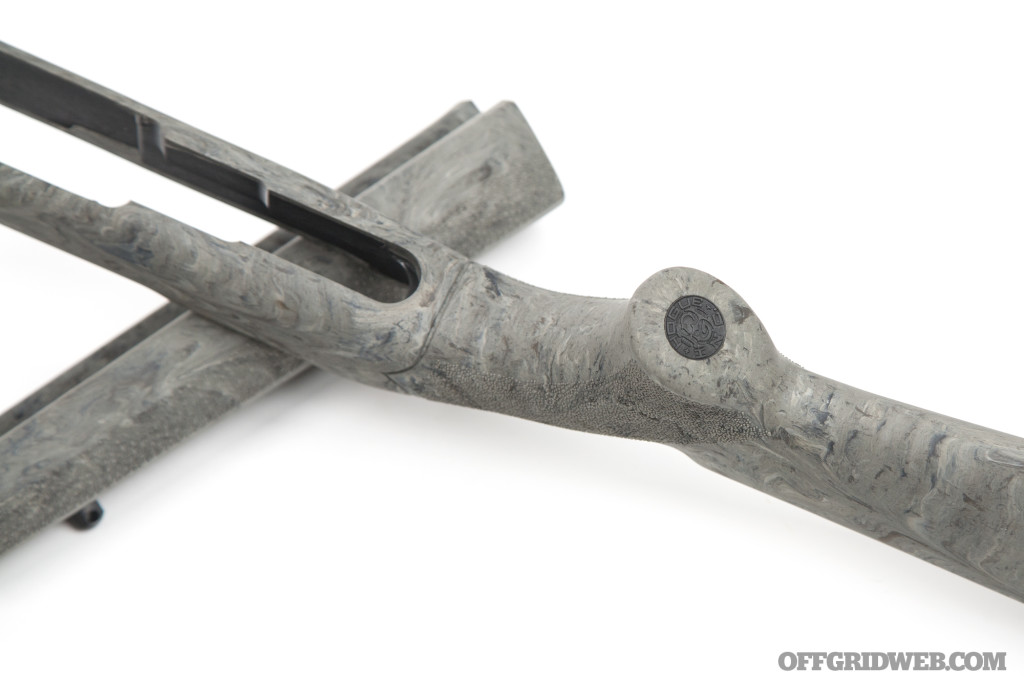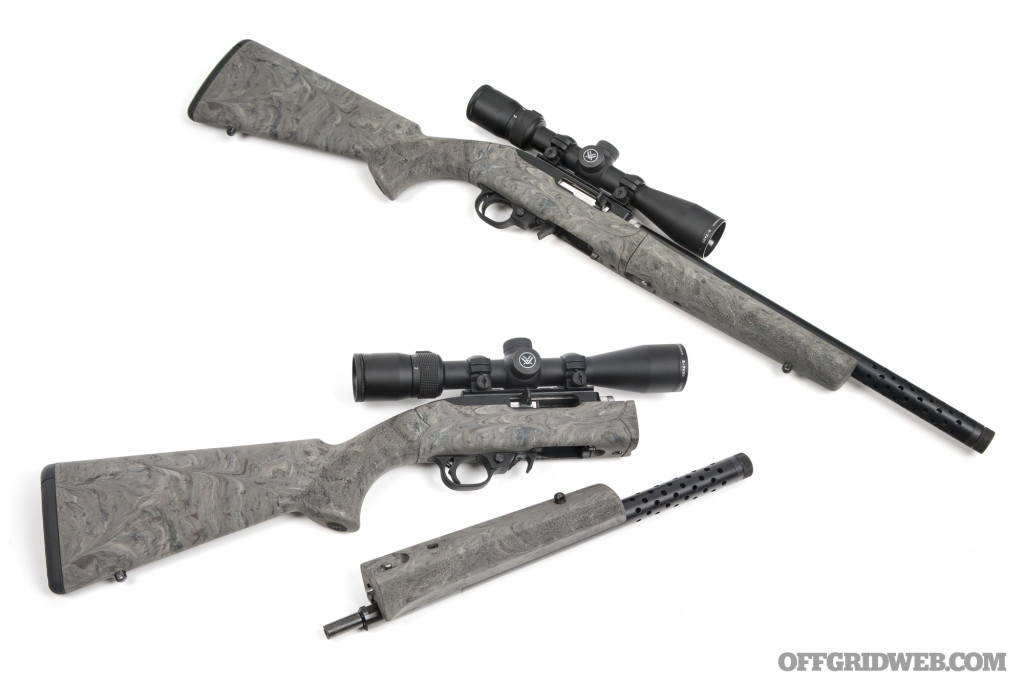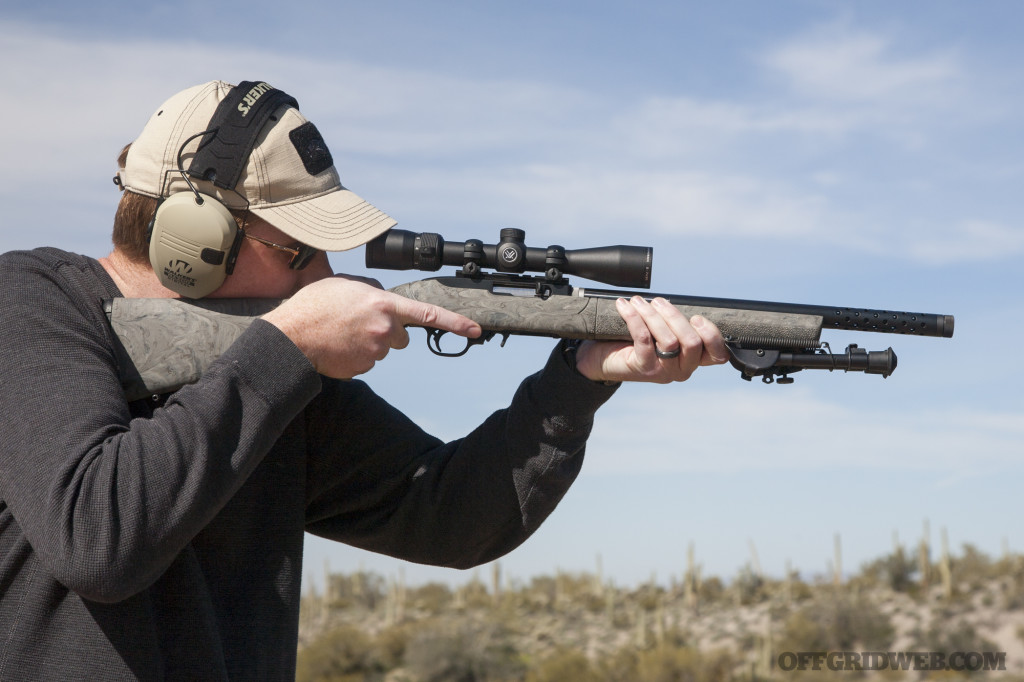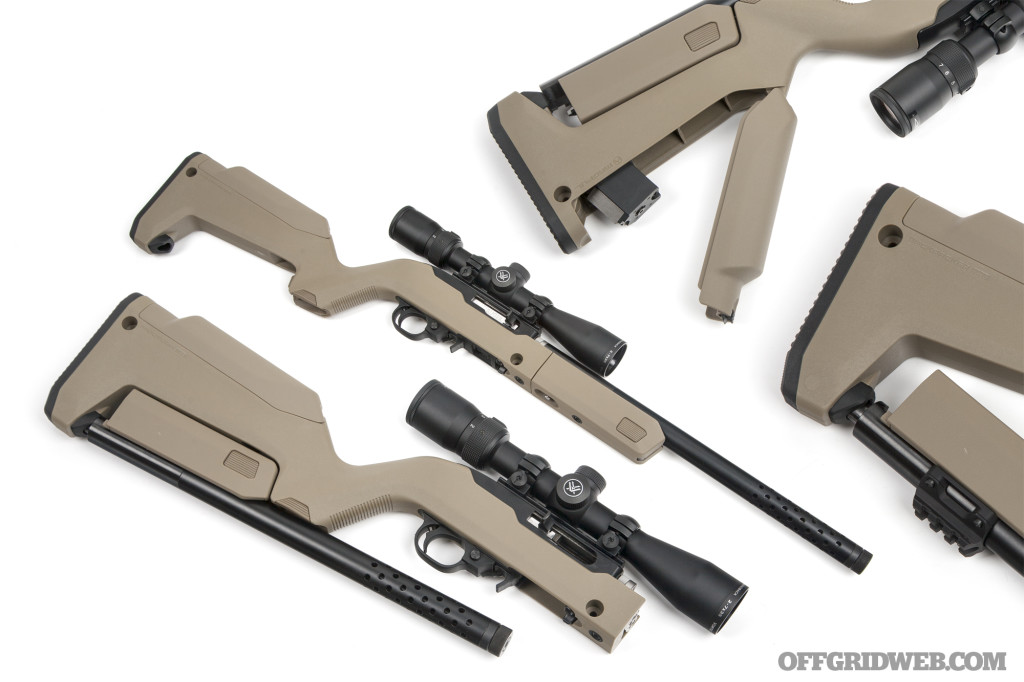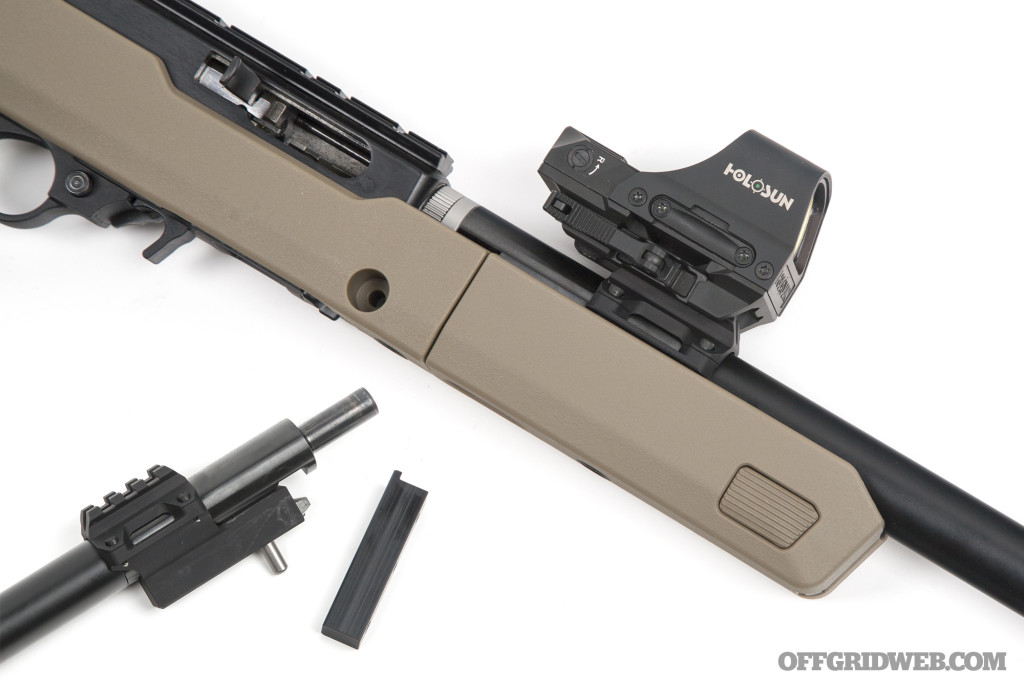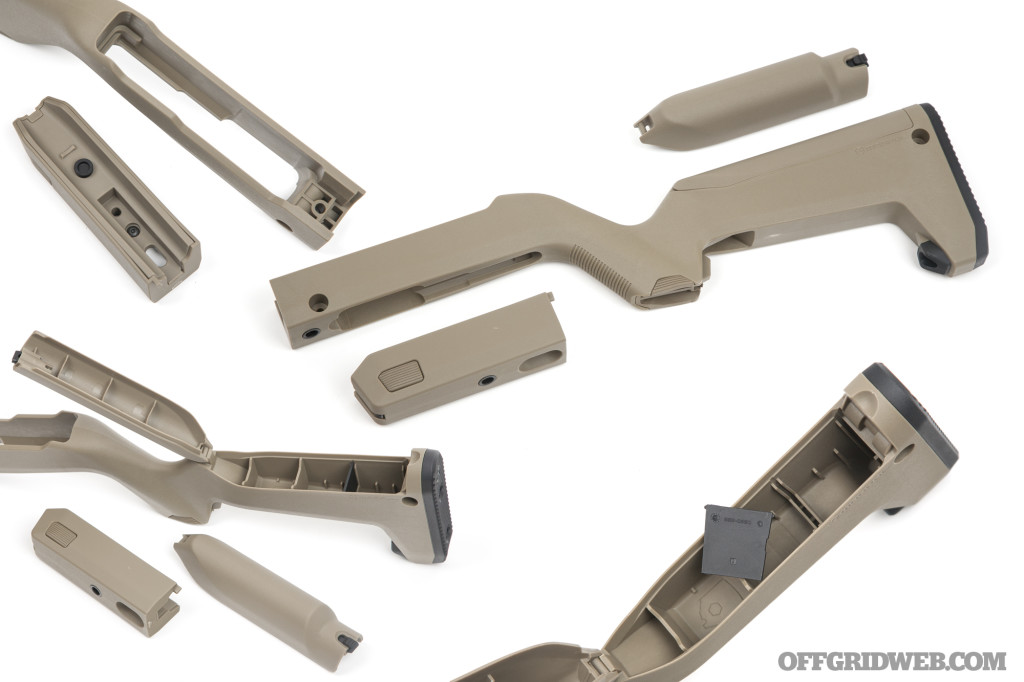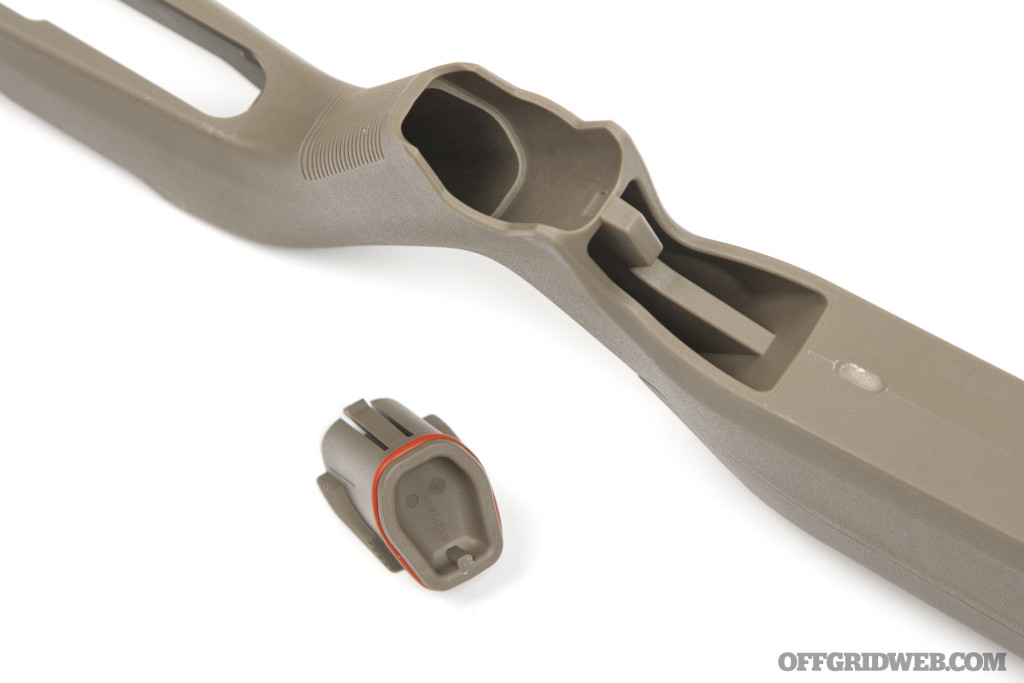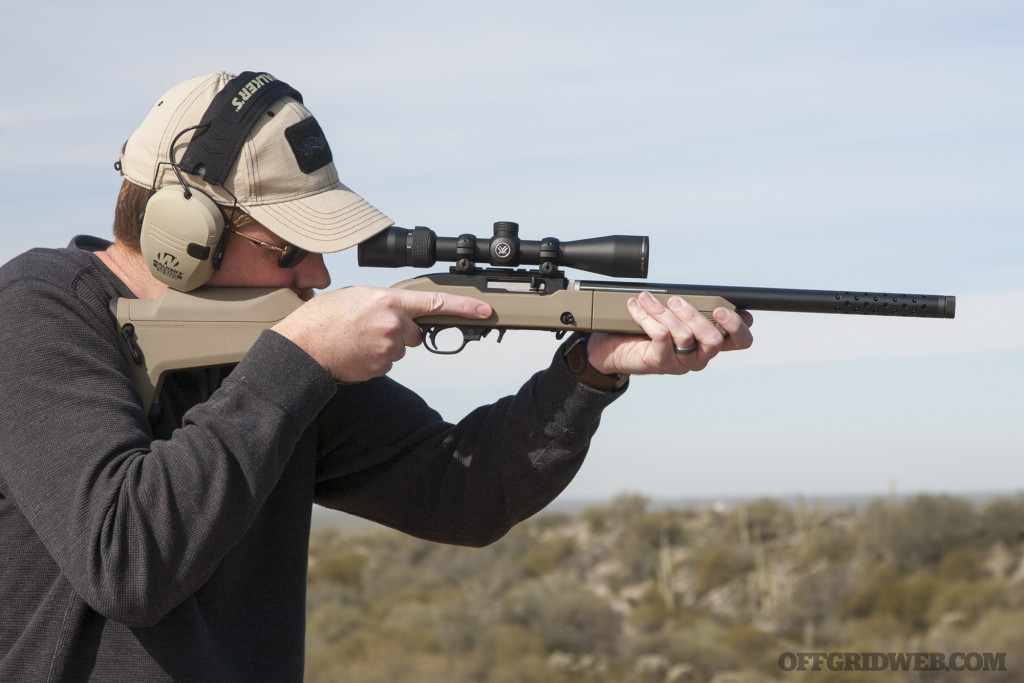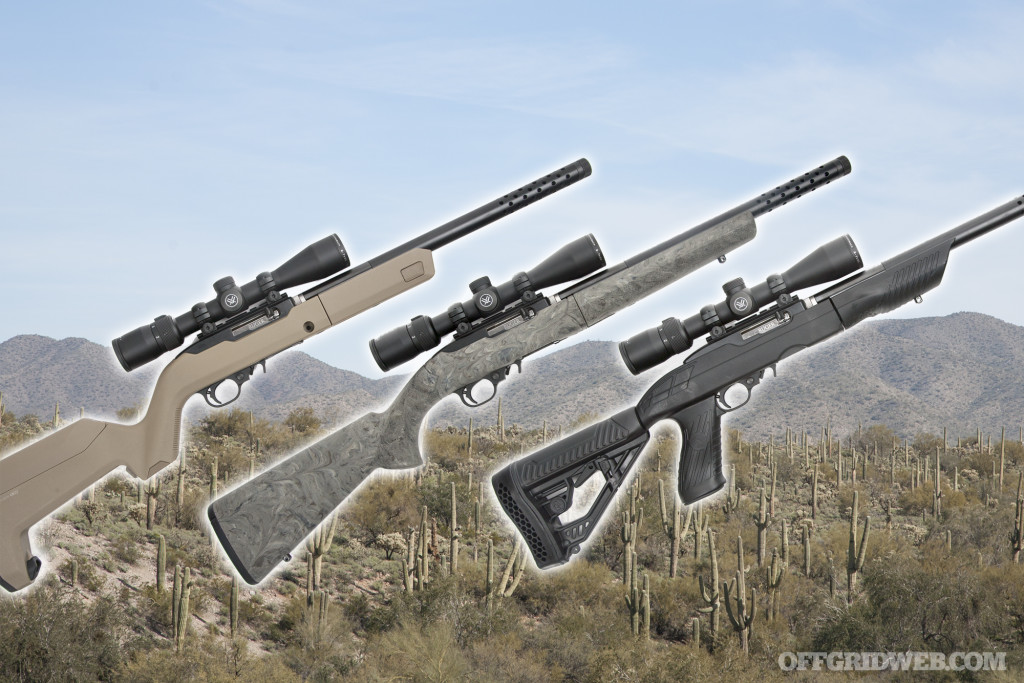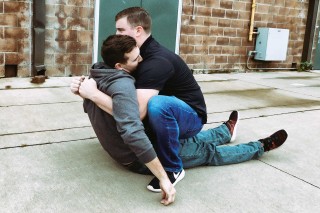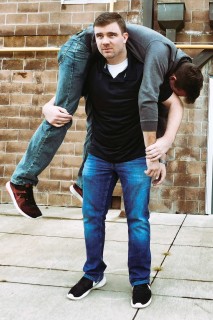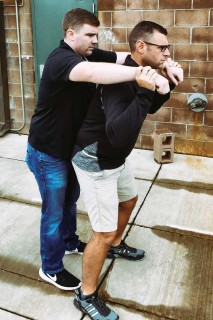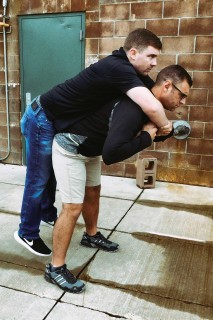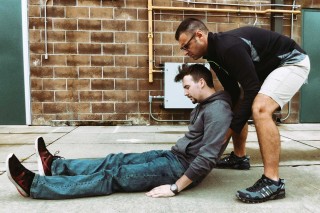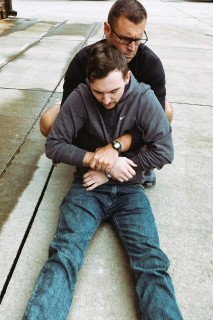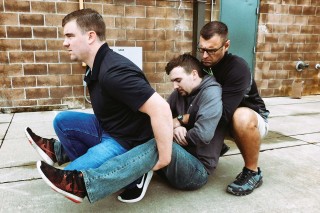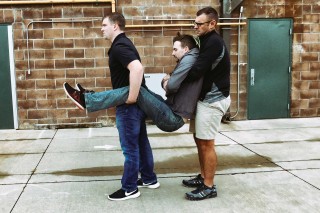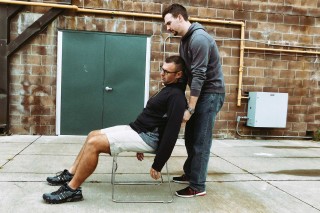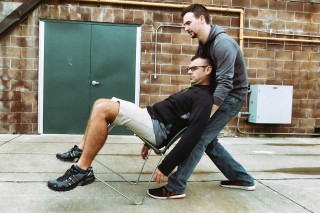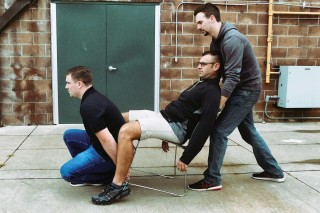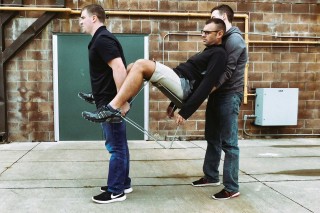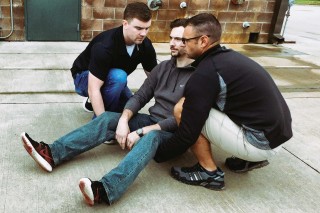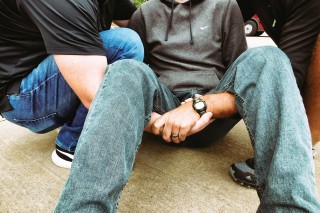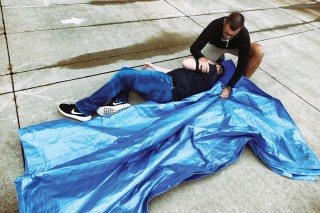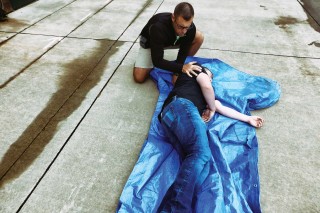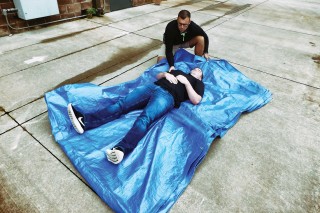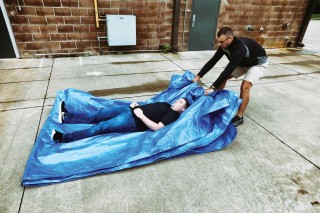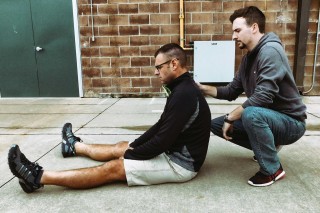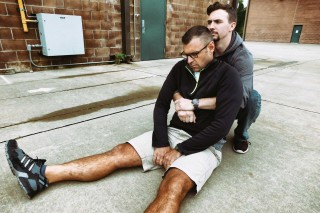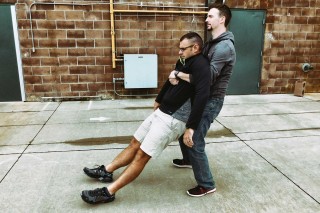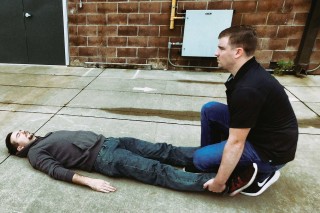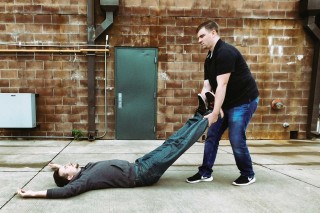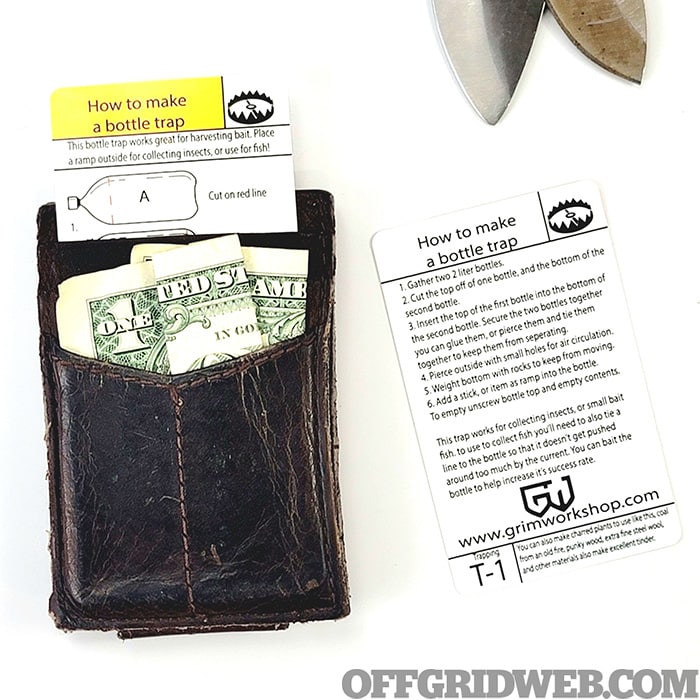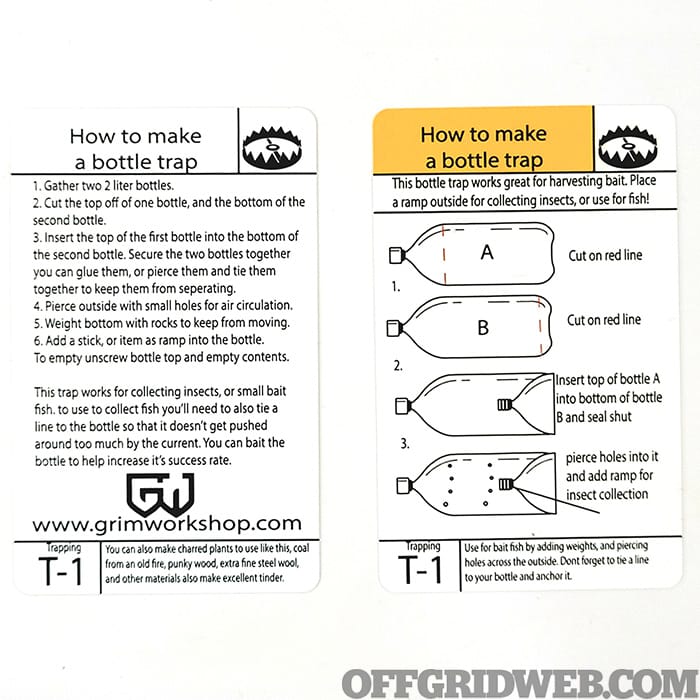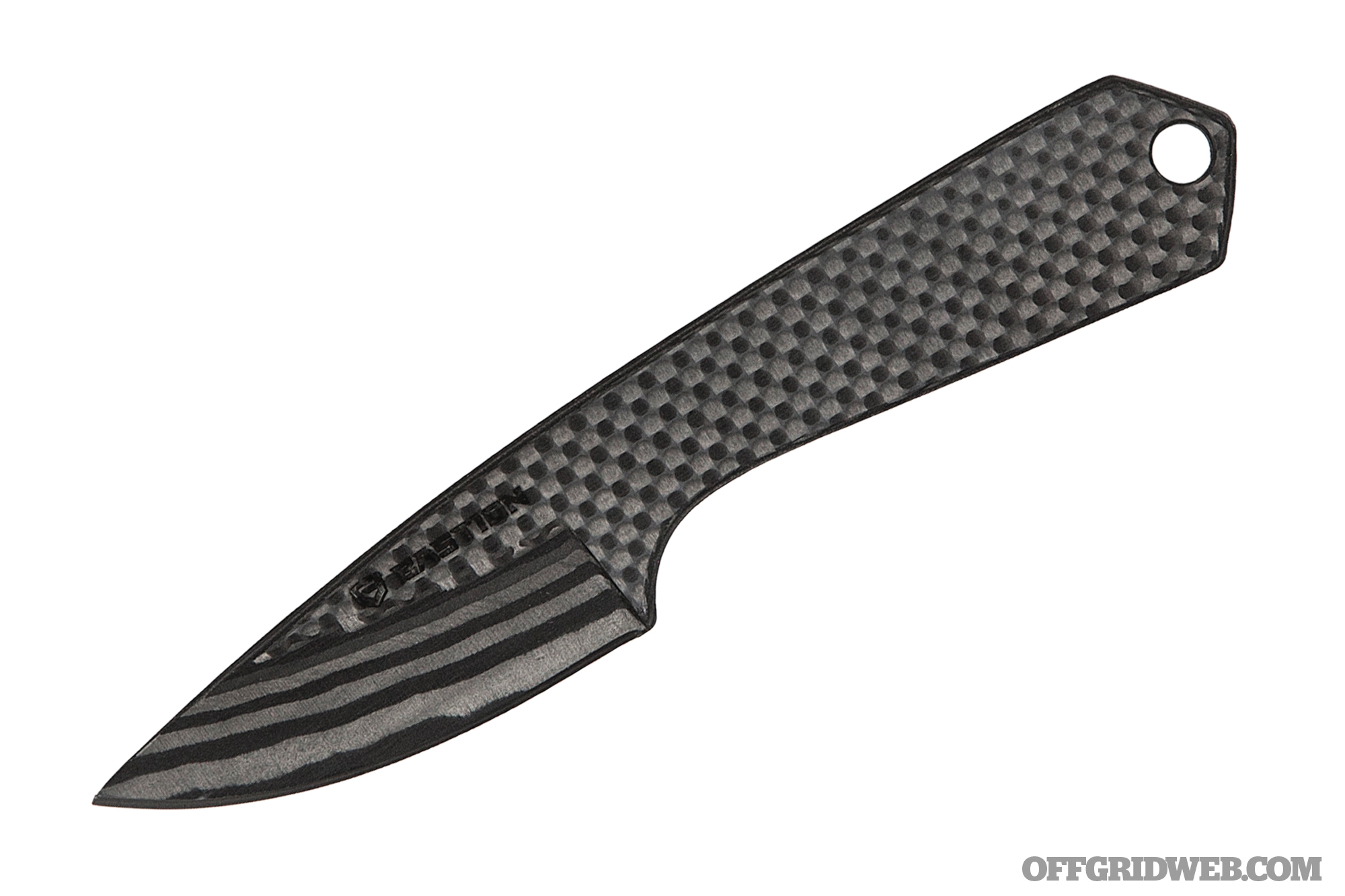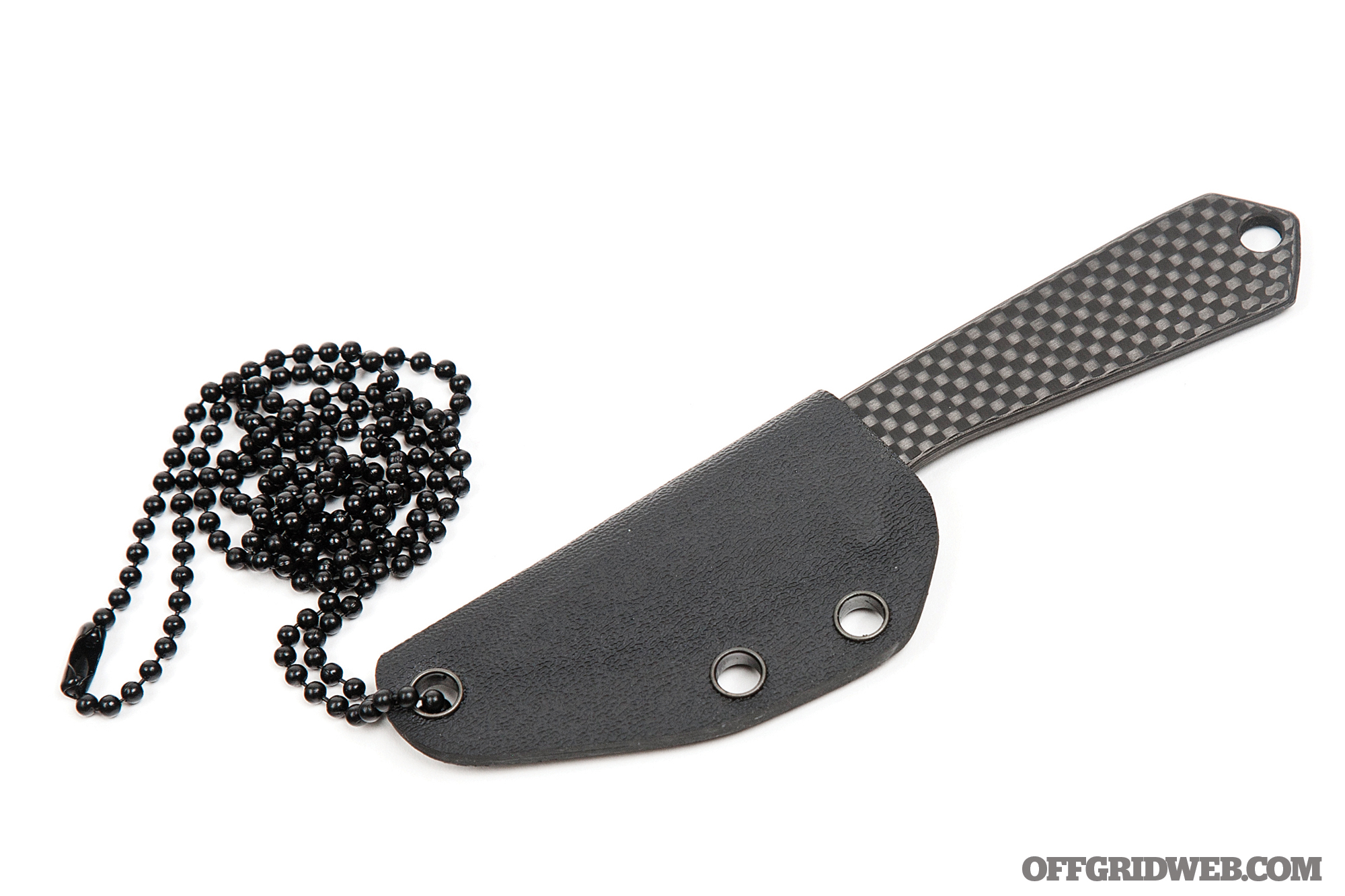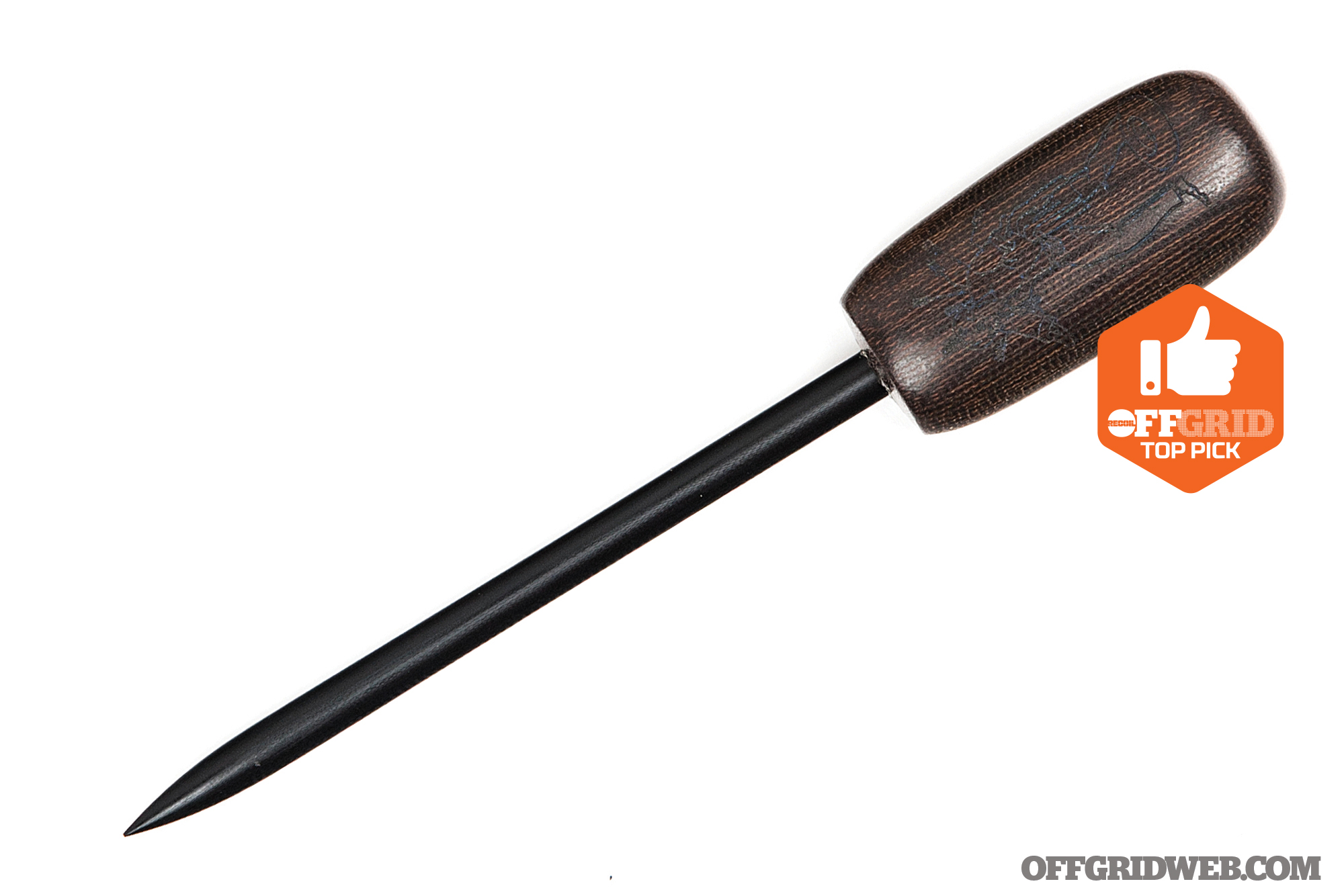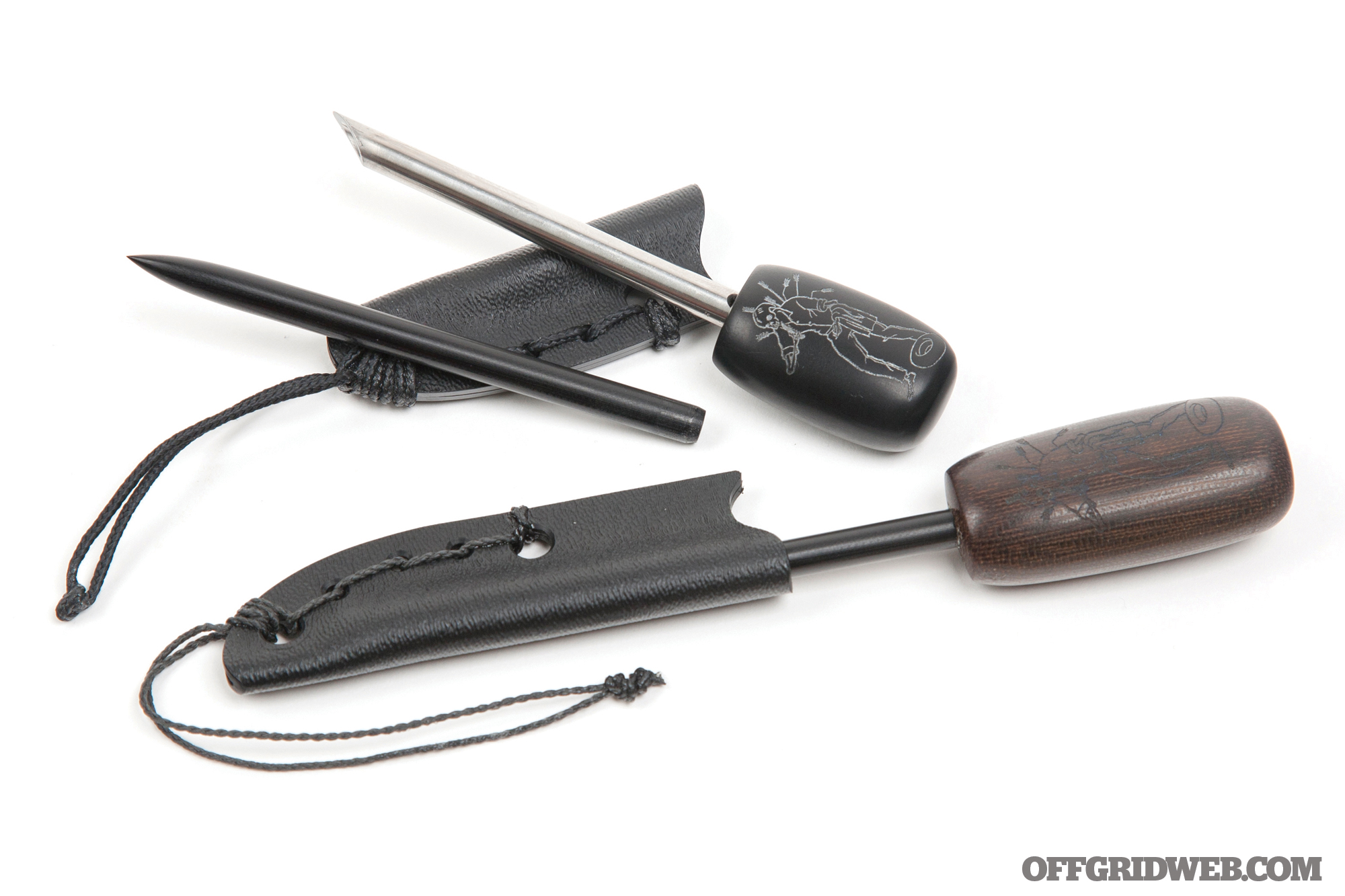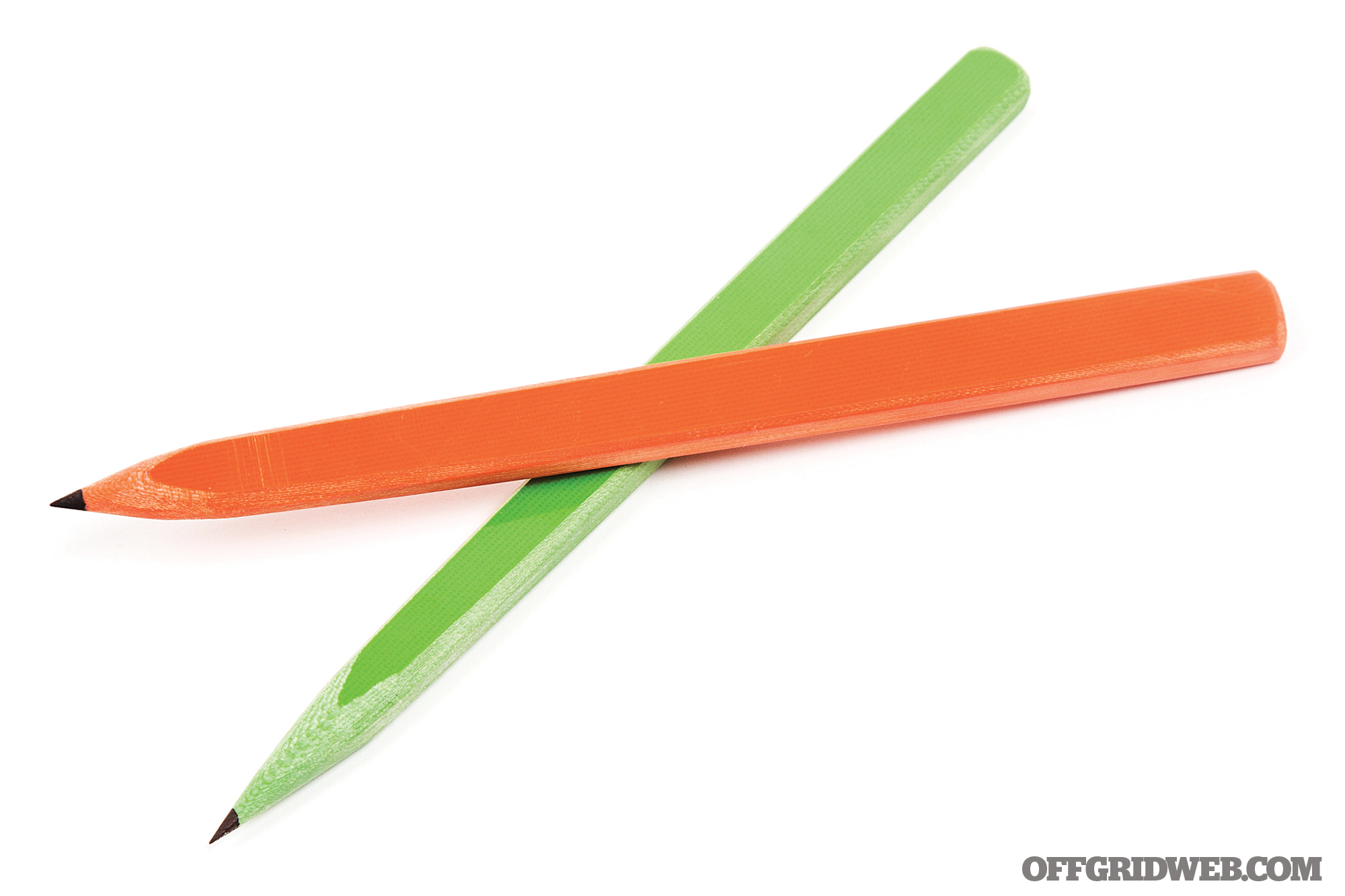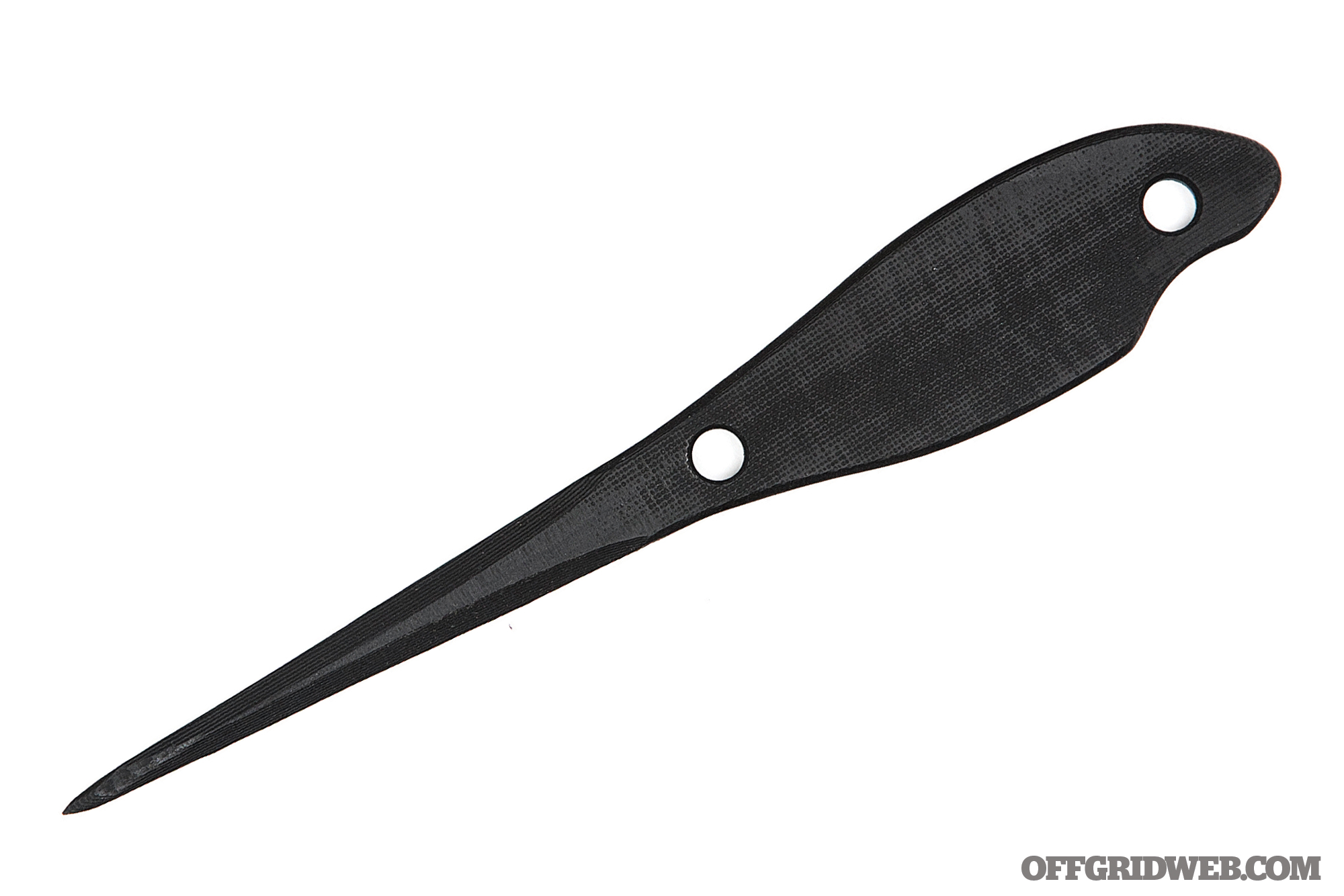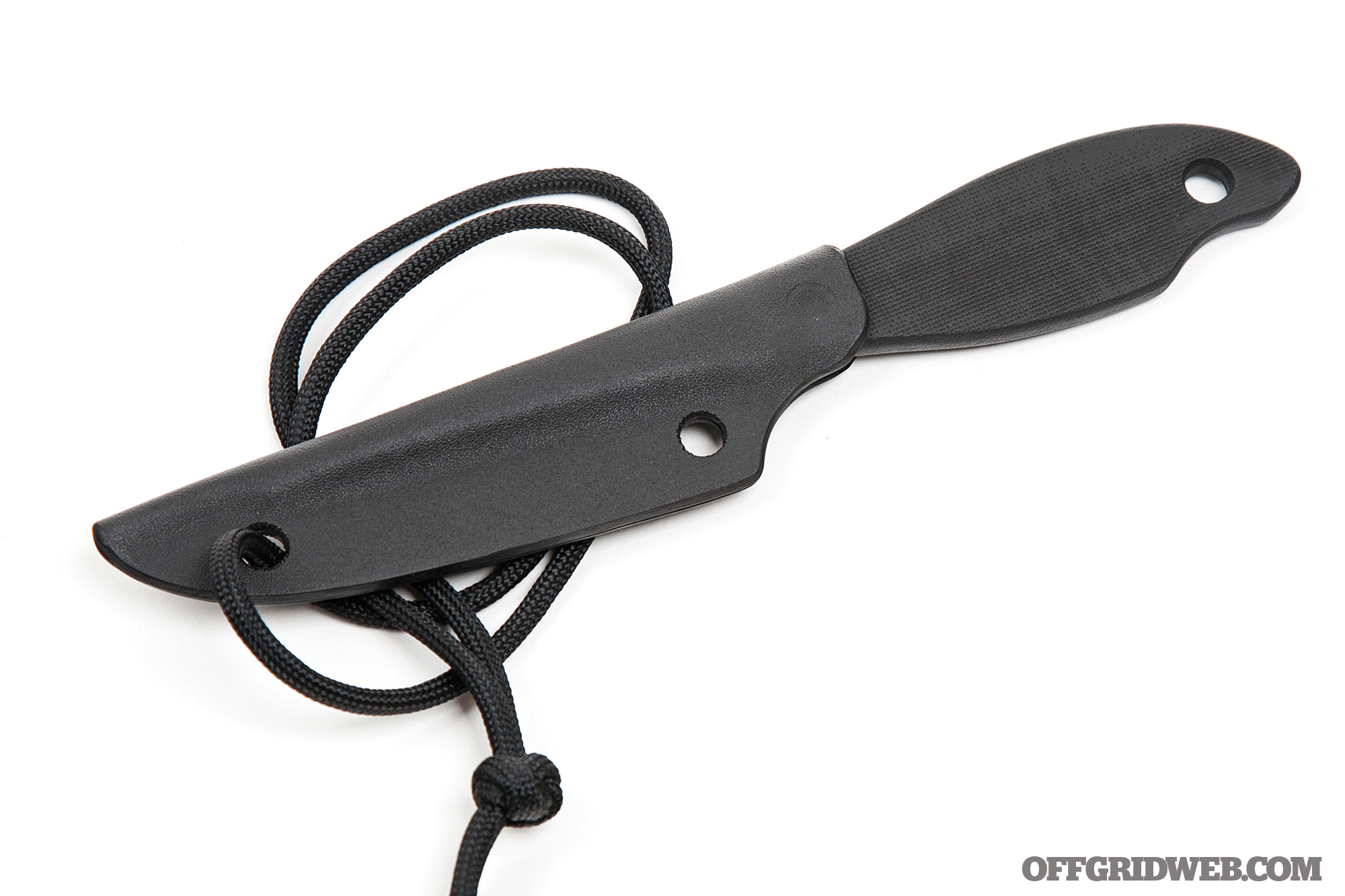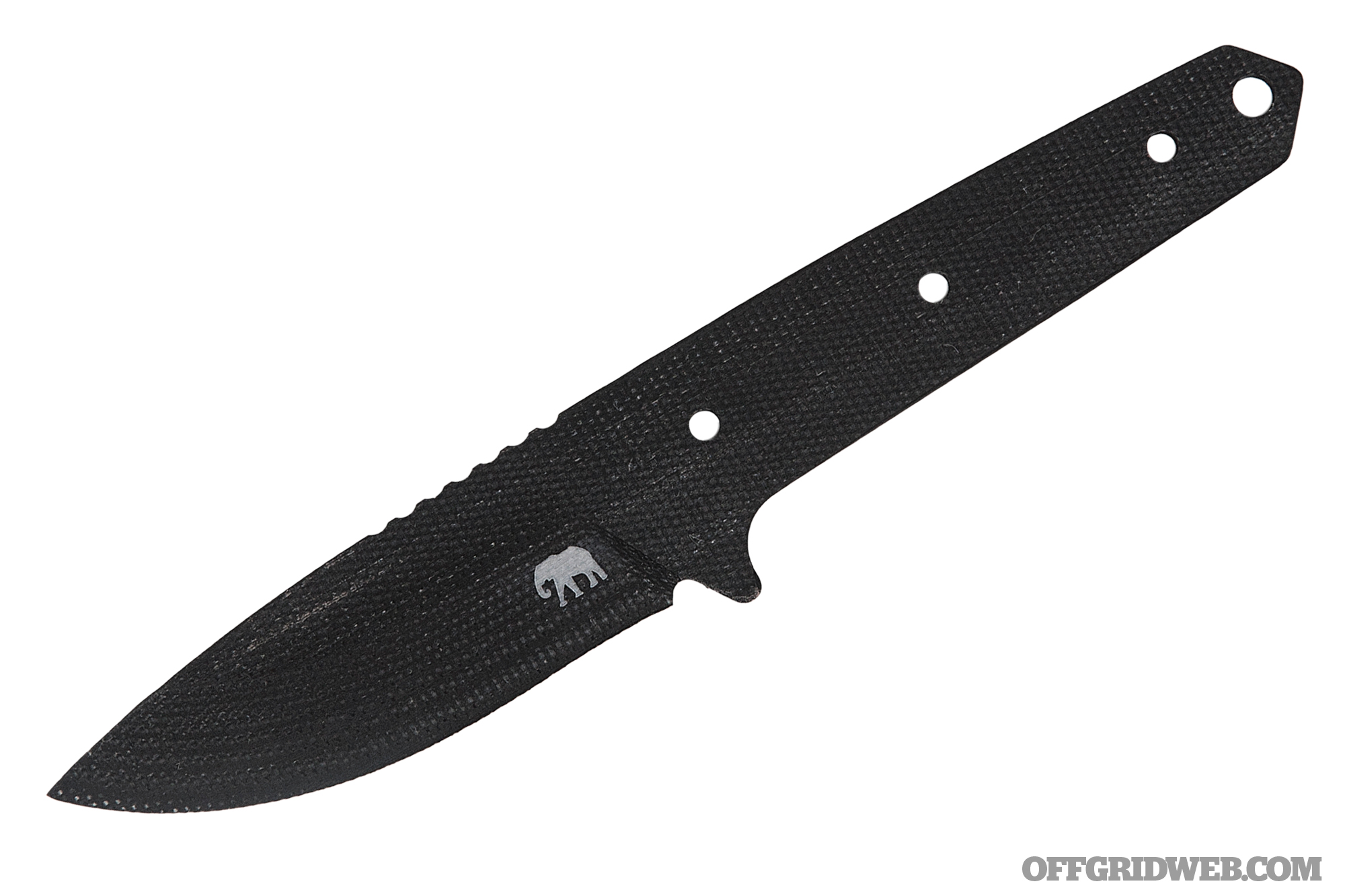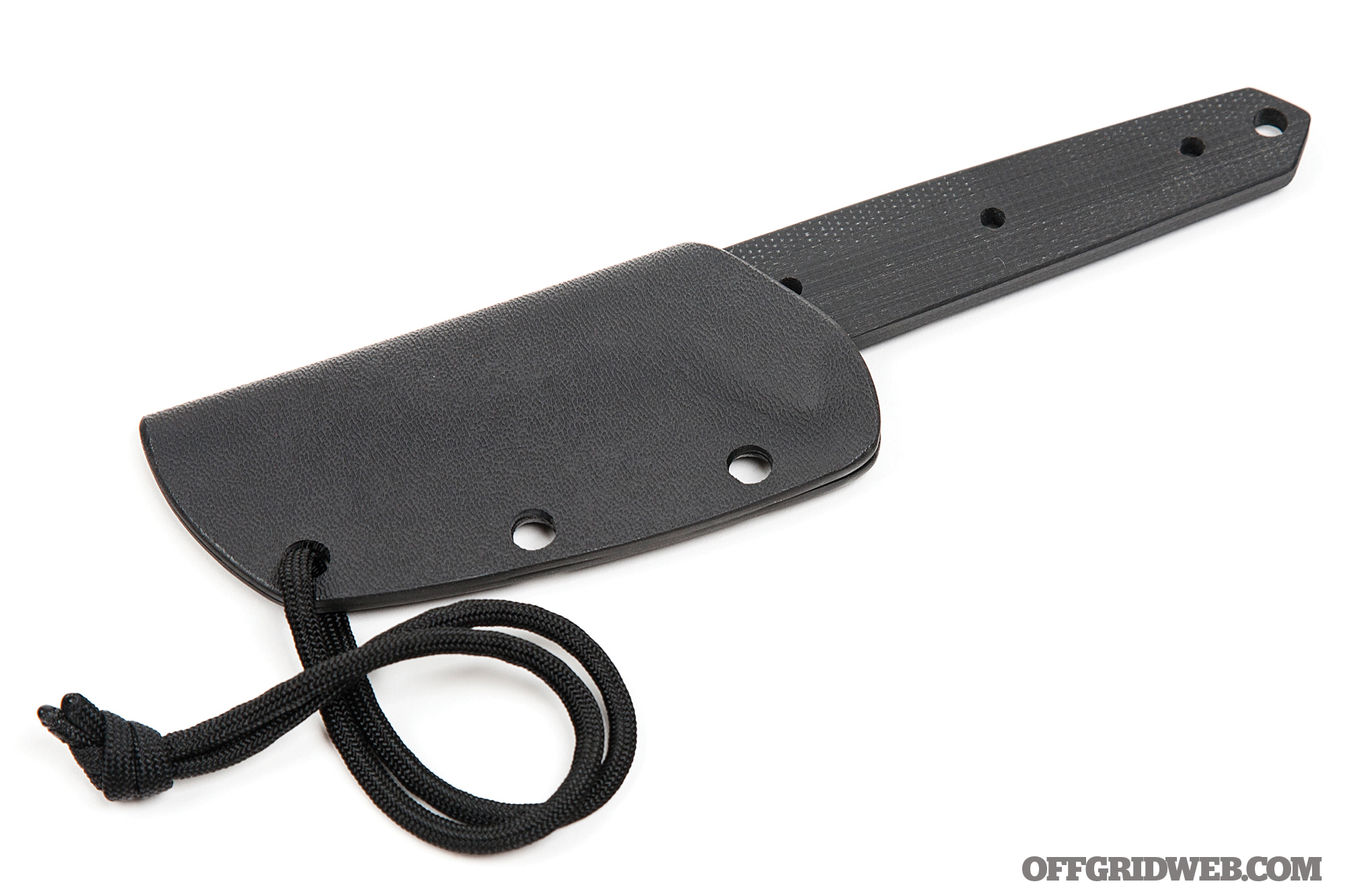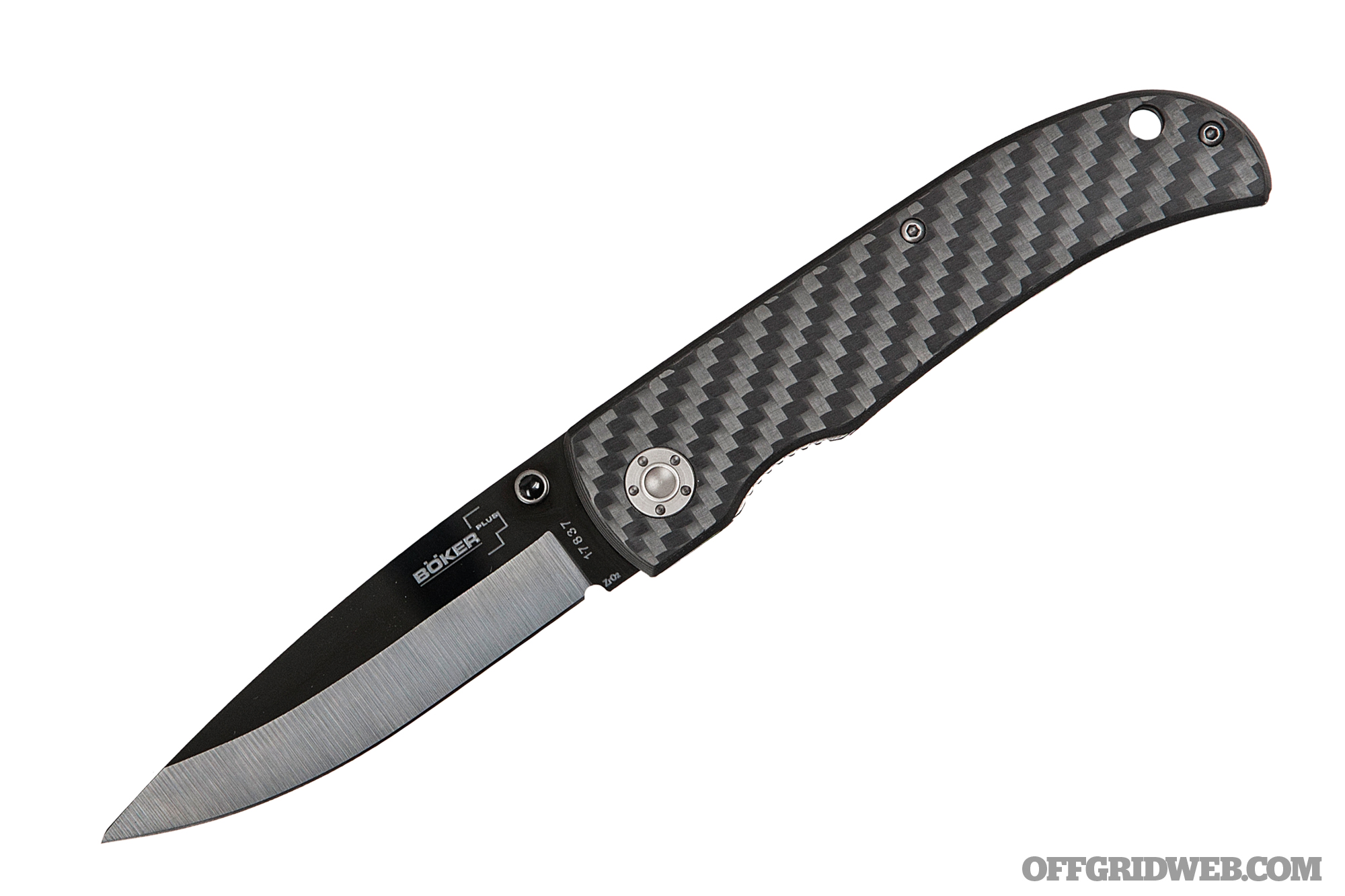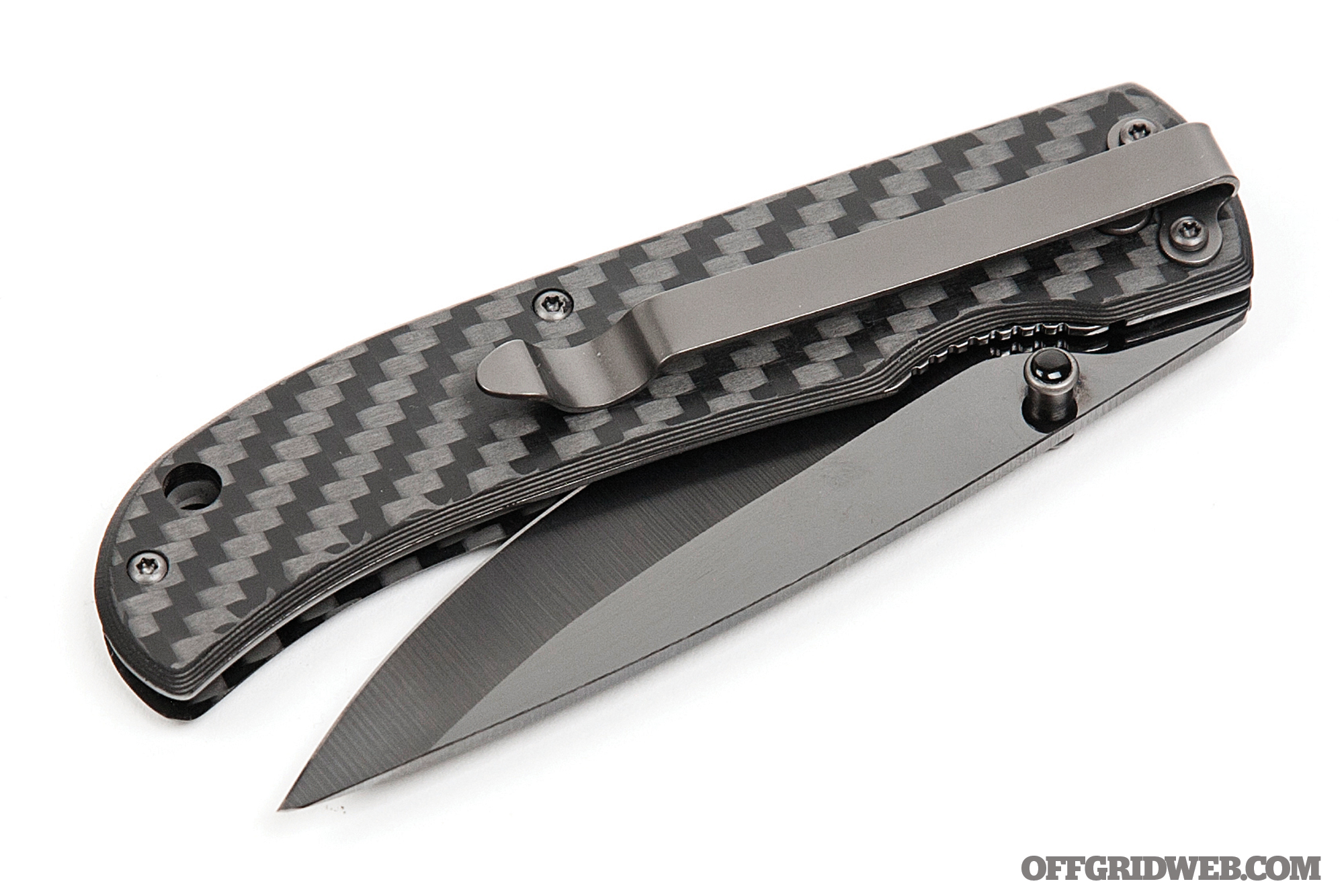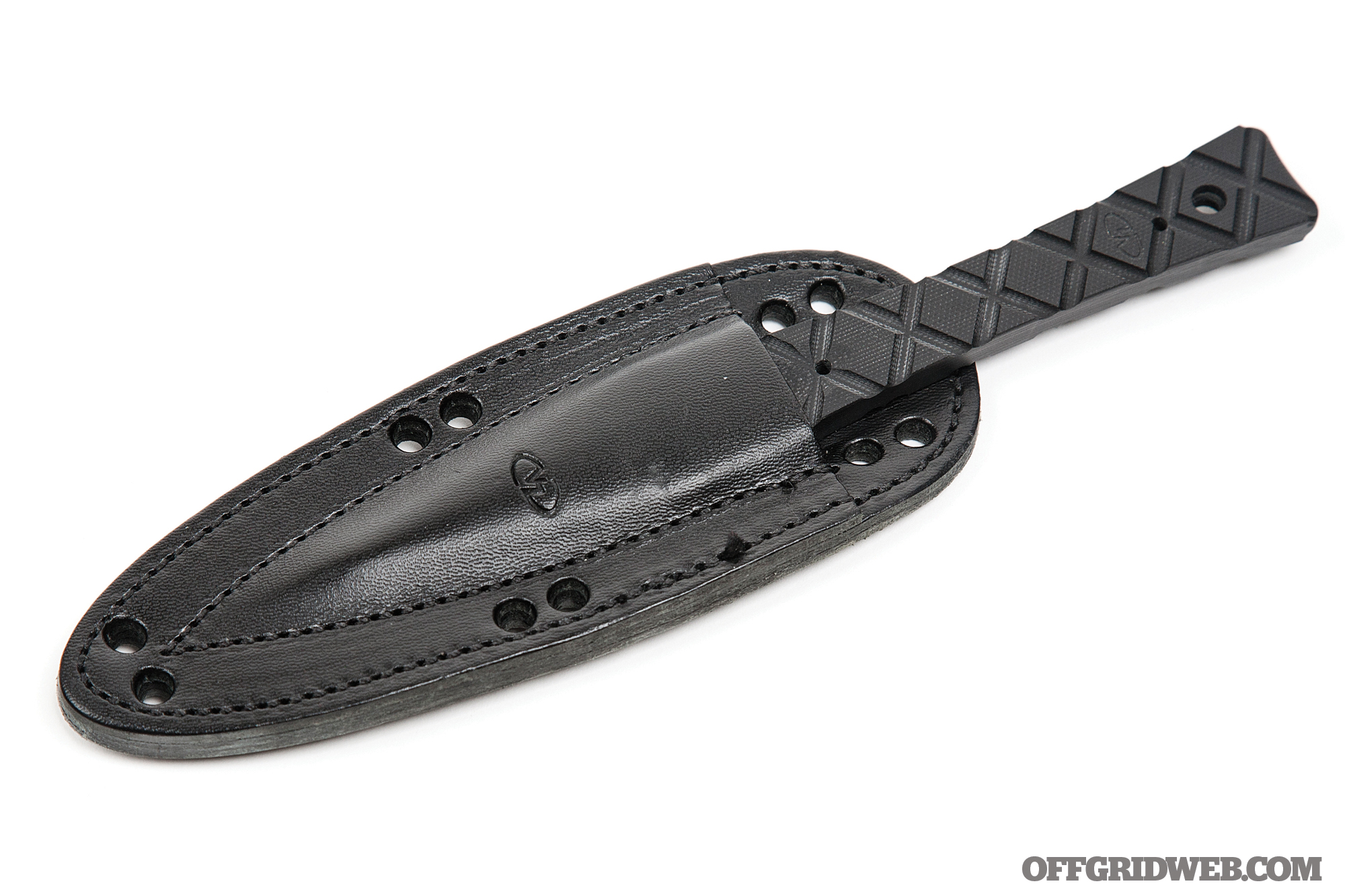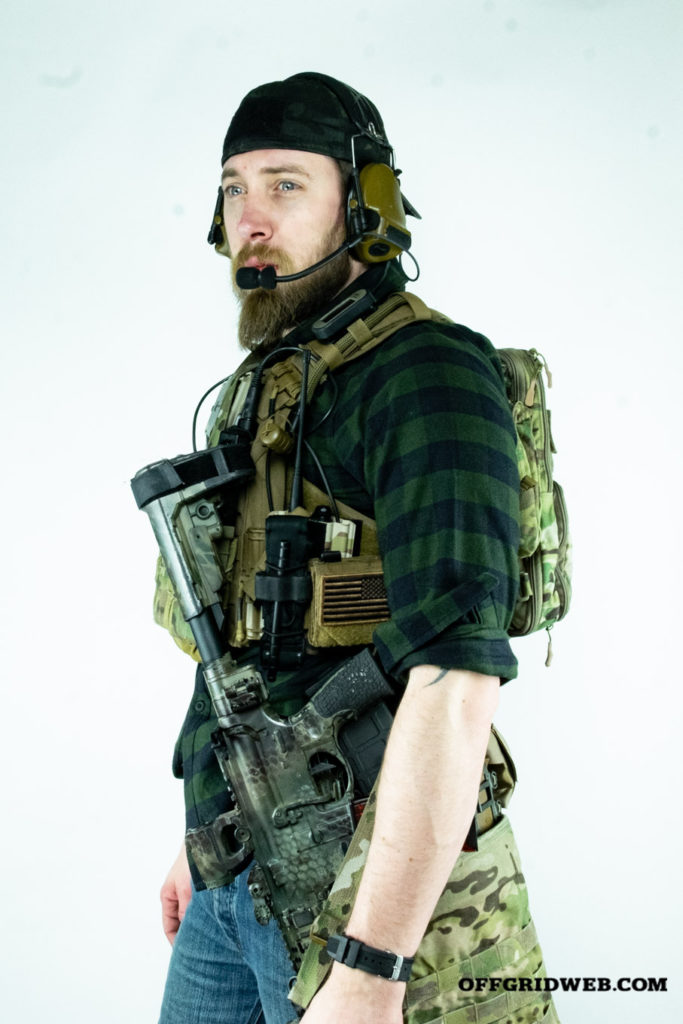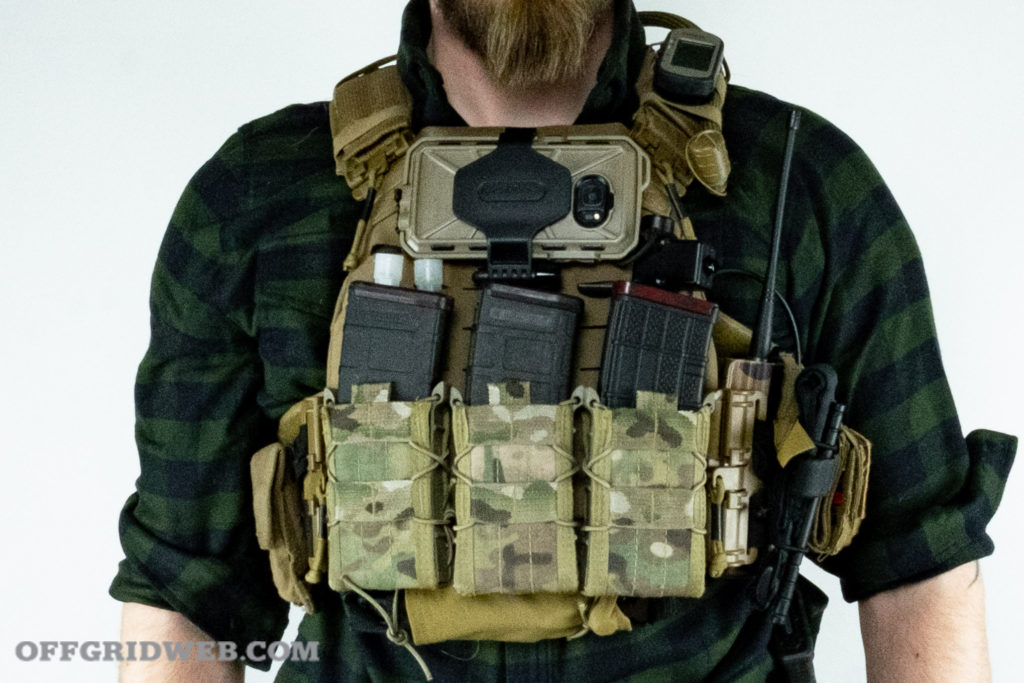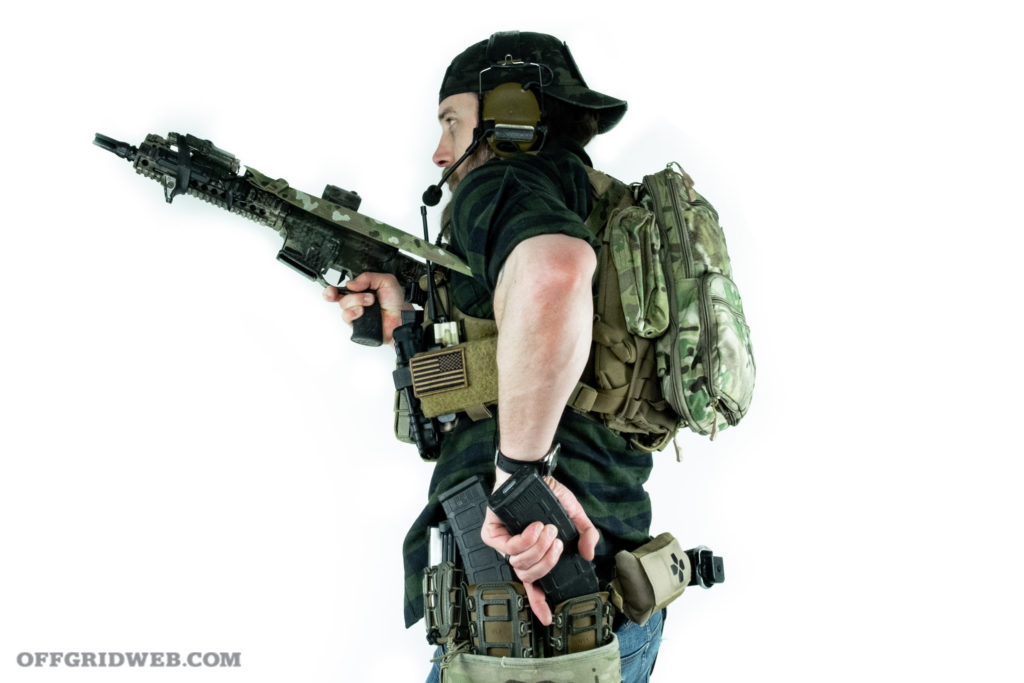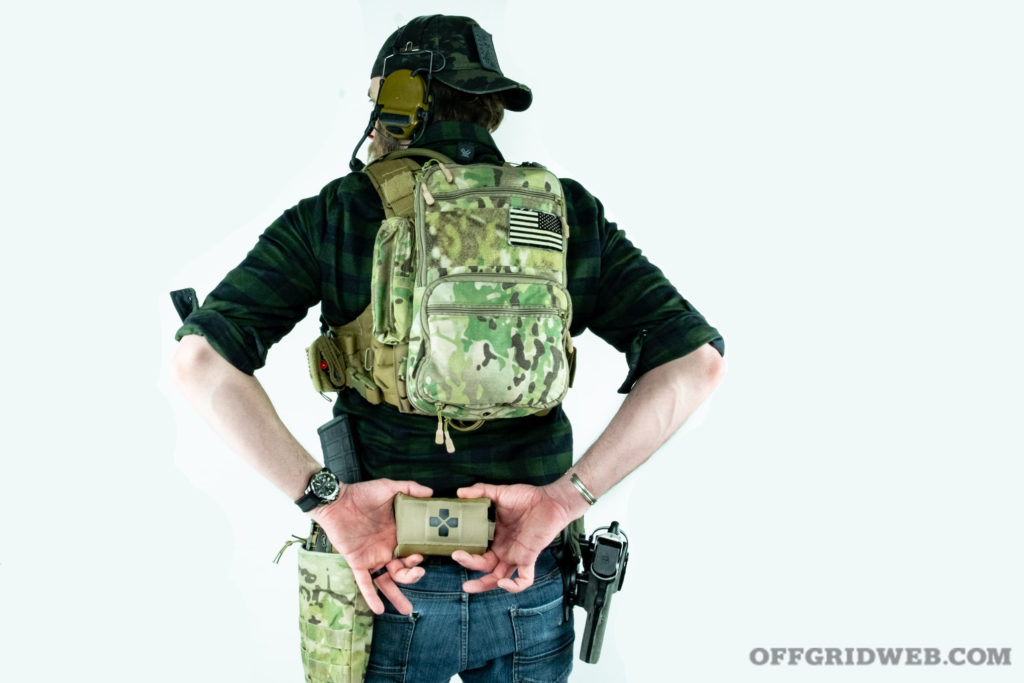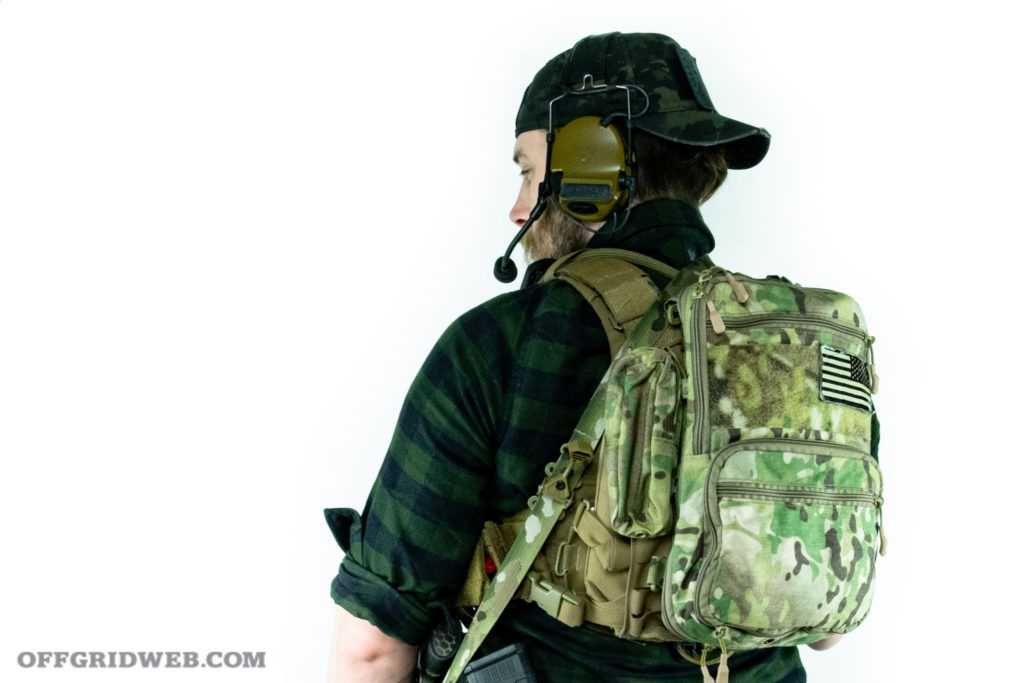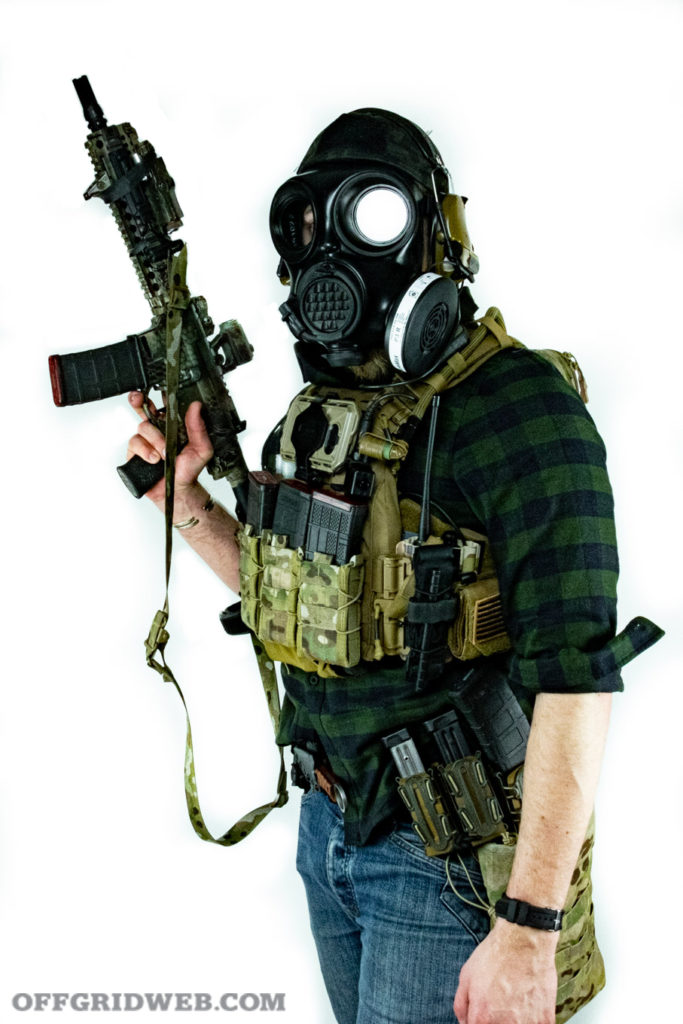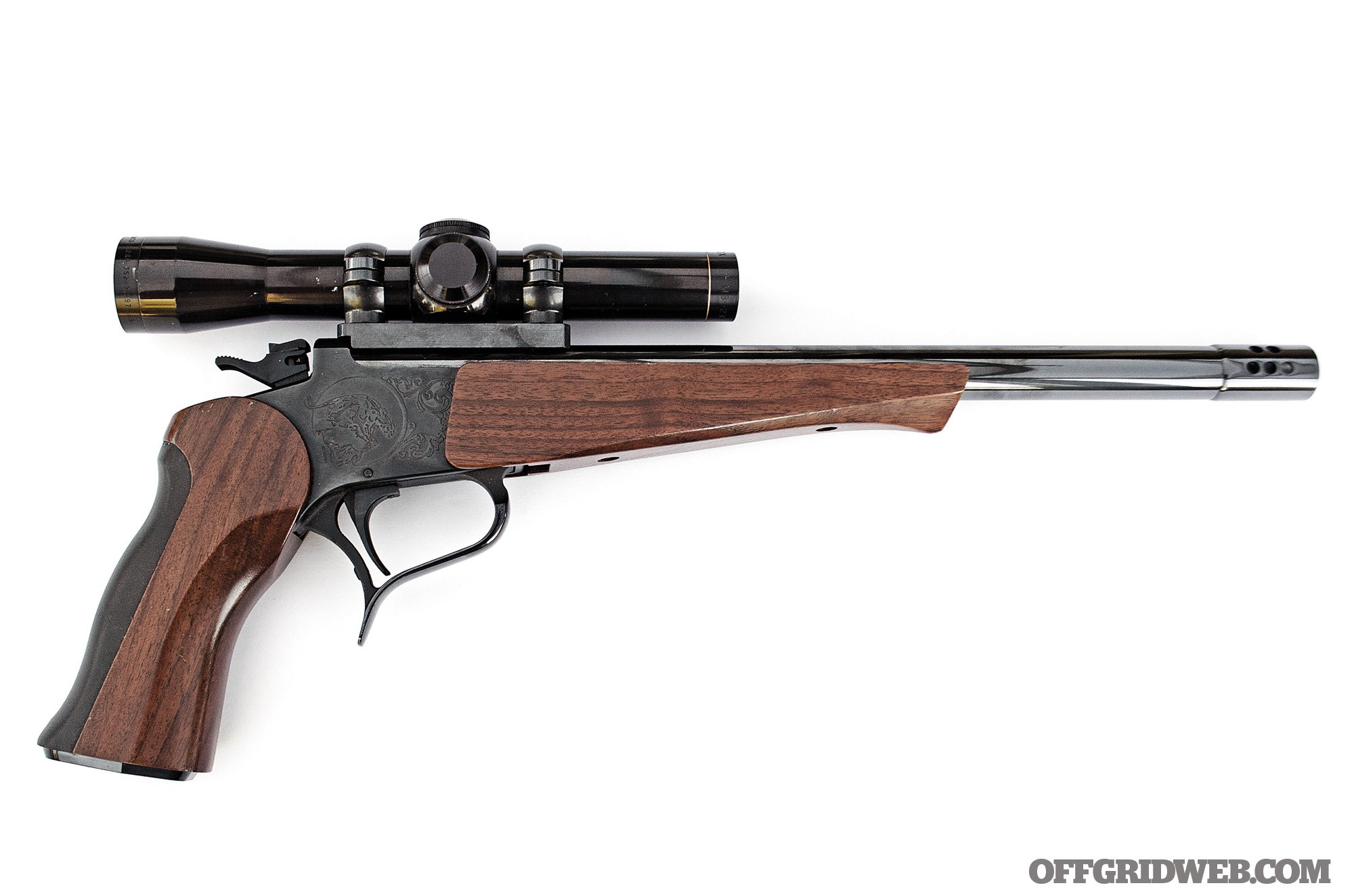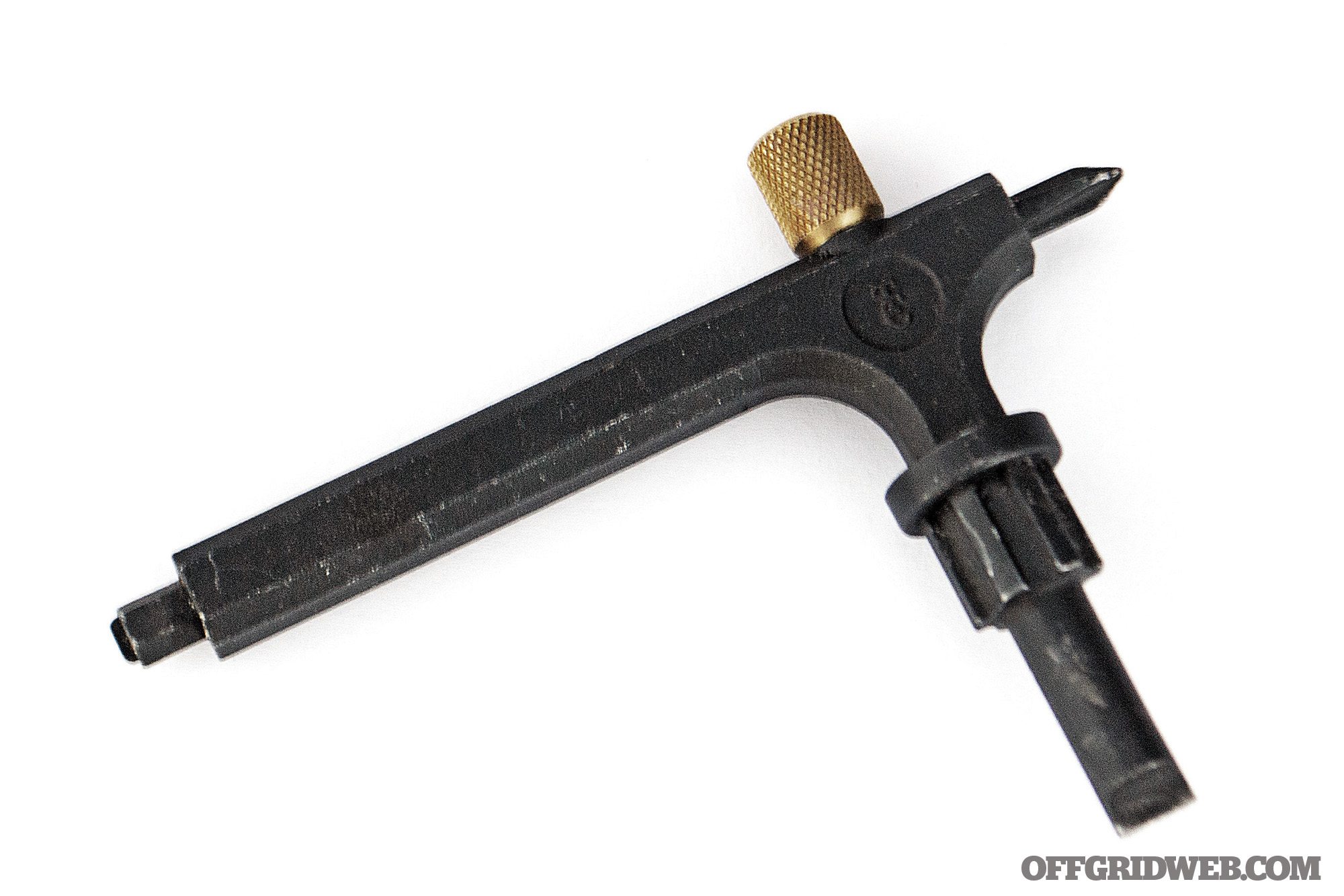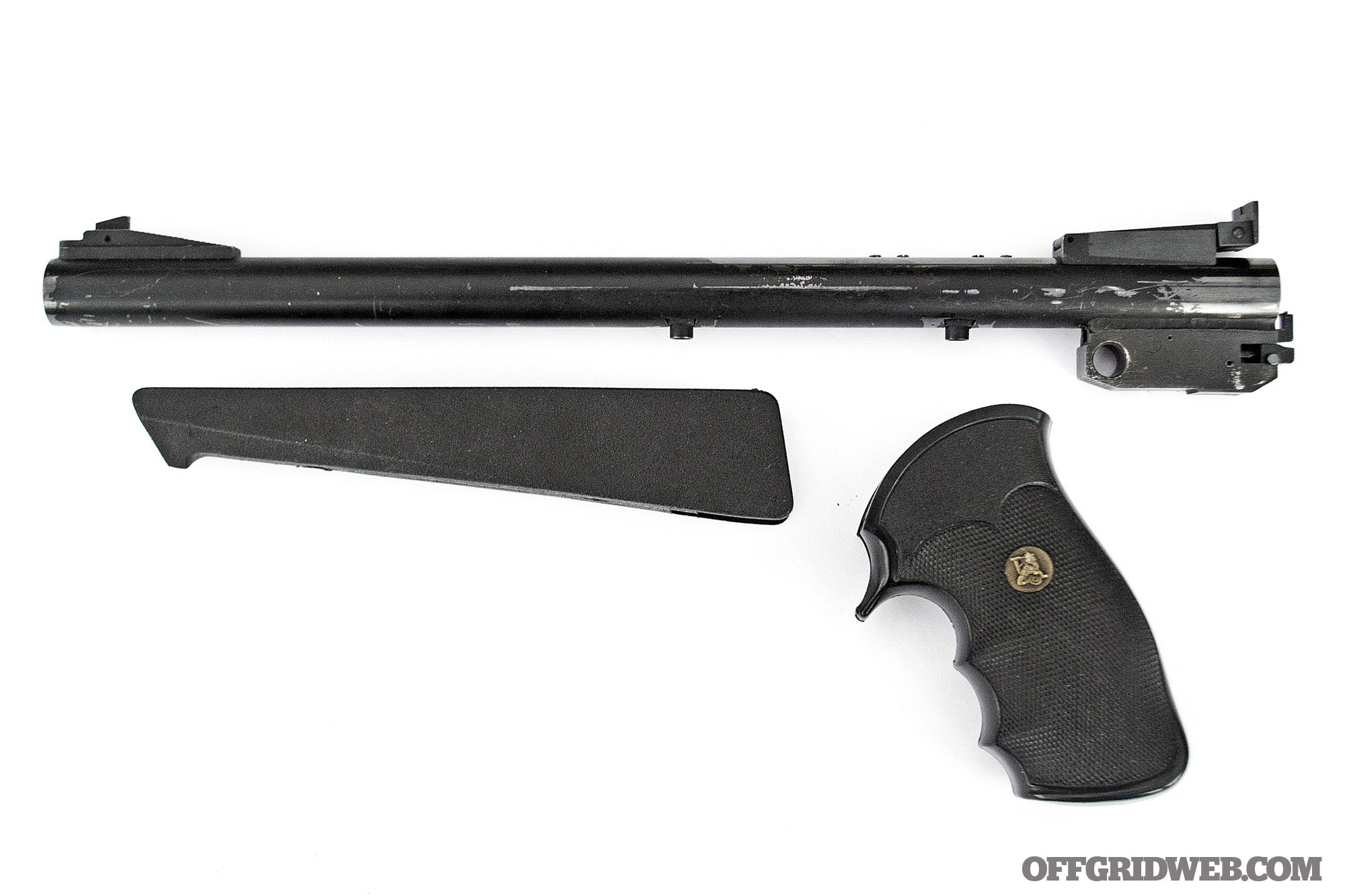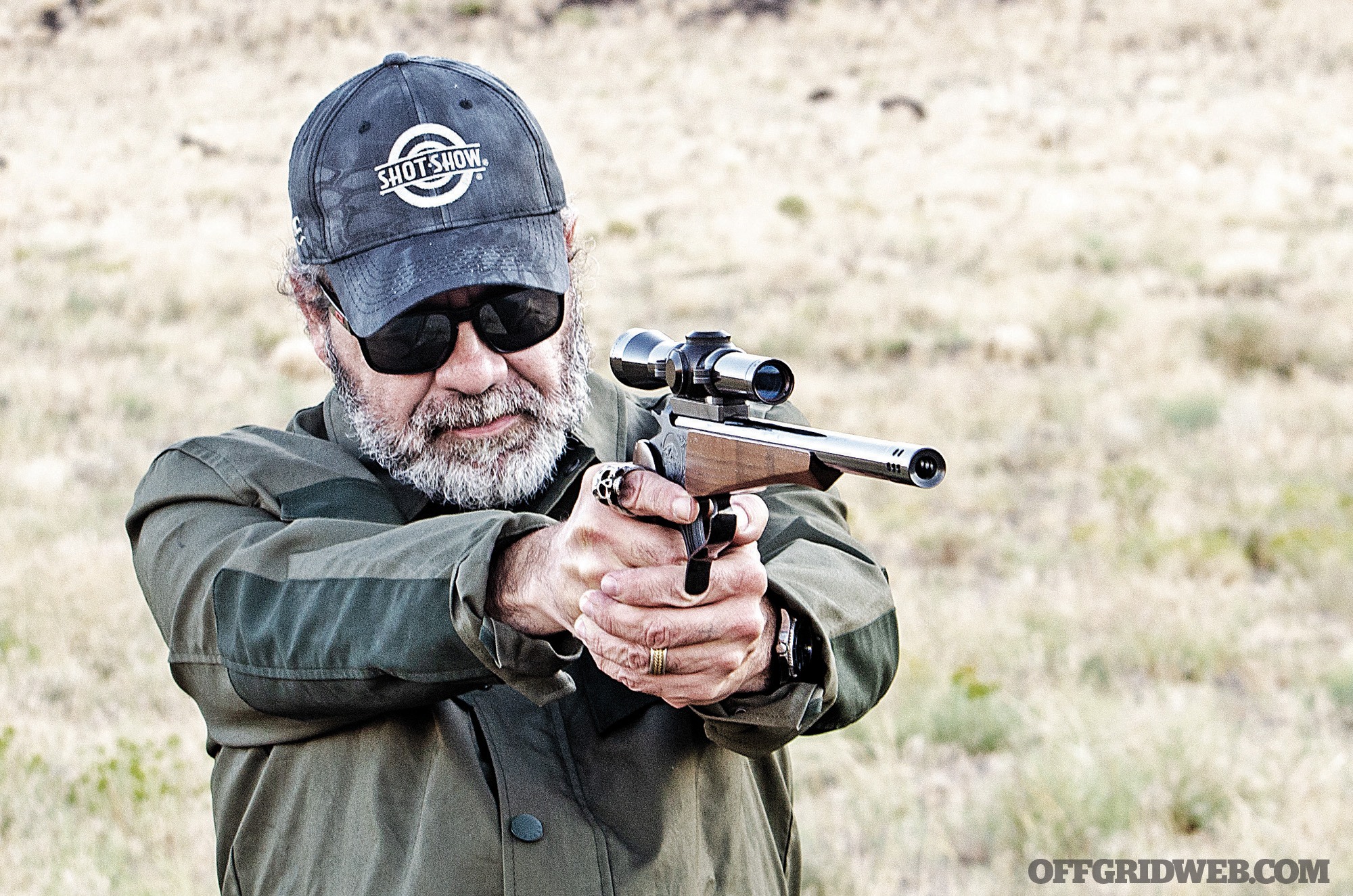In This Article
Ever since the aptly named Little Badger was released by Chiappa, it’s been highly regarded as a field, youth, and survival rifle. And it isn’t hard to see why. Regarding the end of the world as we know it — no, you won’t beat back totalitarian governments, nor hoards of zombies, with a wee single-shot .22LR. But when it comes to the backwoods it’s right at home.
At under 3 pounds with a street price south of $200, the Chiappa Little Badger is an appealing choice. It comes equipped with military-style peep sights that any serviceman will be intimately familiar with, and a rather decent (but not great) trigger. While we found the factory sights to be more than adequate for our purposes, many have taken it upon themselves to file the front sight thinner to obtain a more refined aiming point.
There are four removable Picatinny rails that serve as a handguard and a place to mount a small optic, if one so desires. Note that the panels themselves are polymer and therefore unlikely to hold any sort of hard zero with an optic.
The skeletonized buttstock features an integral round holder for those who wish to utilize it (we didn’t). And there are a number of factory accessories available, such as hammer extenders, buttstock pouches, pistol grips, and carrying cases.
But we did things a little differently.
As opposed to trying to cobble together an all-around survival rifle as so many have done, outfitting their Little Badgers with all manner of fishing gear, paracord, fire supplies, and compasses, we took a specific approach. Our Chiappa Little Badger would be a dedicated small game getter. A dinner maker or grocery shopper, if you will.
Stocking Up
Because we set up our Little Badger as a dedicated small game getter, we wanted everything to be in a single package. The integral shell holder not only exposes ammunition to the elements, it’s not very efficient. A pouch would be a better choice for us.
Chiappa has its own buttstock pouch, but we found it clunky. Many people mount pouches on the stock (surplus pistol magazine pouches are popular), and we did the same. An M16 cleaning kit bag we scored for $3 at a local surplus store would be the base.
As it is, the cleaning kit pouch was longer than we liked, so we broke out the needle and thread, along with an eyelet punch.
After we shortened the pouch and pounded the eyelets in place, we mounted our new stock pouch with zip ties. That provided a dedicated place to hold a considerable amount of ammunition.
A Wilmont Knives K23 small fixed blade was also attached to the stock in the same manner, allowing us to gut and skin game immediately if need be.
Making it Smaller
Though the Little Badger already has a small footprint when folded, making roughly a 17×8-inch base triangle, we wanted to reduce it even further. The first thing we did was remove the lower Picatinny rail from the barrel. Not only were we not using it, but the removal allows the Little Badger to fold slightly smaller.
But we weren’t totally satisfied by this and wanted to go smaller still.
To accomplish this, we broke the Badger down into two separate pieces rather than simply folding it. The factory screw itself is easy to remove, but we wanted something even easier. Initially we installed a thumbscrew in place of the factory bolt, but not only was it a bit cumbersome, it also added an additional part to possibly lose.
A 1-inch, 5⁄16 diameter hitch pin is a perfect fit. Not only can the rifle be broken down or assembled very quickly, the split ring on the end can be dummy corded to the rifle. While ours is still in the white, a spray or two of Krylon would quickly change that.
Of course, now that the Little Badger was in two pieces, we needed an efficient way to package the barrel and action together. We removed one screw from the rear right of the receiver to install our custom barrel bracket.
Staying true to our cheap and readily available theme, a ½-inch cable runner from the hardware store worked very well for this purpose. We took the additional steps of hitting it with heat gun to make it pliable to allow the barrel to fit a scootch more snugly. A wrap of electrical tape around the barrel of the Badger helped to increase the friction fit, but wasn’t strictly necessary.
The combination of the barrel holder and a thick rubber band — one of those cause bracelets — makes for a small package indeed (that’s what she said?). How small? Damn small. Just around 17 inches long and a mere 4.5 inches in width at the widest point.
Having the Little Badger in two pieces does make it slower to employ, but this isn’t a defensive rifle — it’s an augment.
Shooting Fast
Since the Badger is a single-shot break action, you won’t set any record split times, but that doesn’t mean we shouldn’t be as efficient as possible. The sheer nature of a single-shot rifle means that you need to be as accurate as possible, but we’re all human. While the Little Badger has a round carrier on the buttstock, it isn’t super fast to reload from, nor does it do anything to protect your ammo from the elements.
Stealing a concept from precision rifle competitions, we made our own quick-load point. Using elastic, a small piece of webbing, Velcro, and a needle and thread, we made a removable three-round holder. We placed it directly next to the action for the fastest-loading possible (left side for right-handers, and the reverse for the statistically insignificant left-handed crowd). It was important to place it on the trigger portion of the Little Badger rather than on the swinging-barrel portion to ensure reloads would be as fast as possible.
Ideally, the first shot would be loaded from ammunition storage, giving you four rounds on tap as you track down dinner.
Quiet Time
Full power .22LR isn’t terribly loud, and subsonic is quieter. To be very quiet, CB Caps can be used. These only use the power of the primer to propel the round. And of course, there are always silencers.
The Chiappa Little Badger comes threaded in ½x28mm, though you have to remove the glued-on plastic muzzle protector to get to it. A multitool made quick work of it, and a quick brush with some acetone removed the adhesive.
For a tiny silencer, we turned to Bowers and their new Bitty. The Bitty is only 2.8 inches long, weighing a paltry 2.6 ounces. Normally we’d just set it and forget it, but even though it’s small, we wanted to keep the pack size of our Badger to a minimum. To that end, a Gemtech 22QDA was installed, allowing the Bitty to be attached or removed in mere seconds.
The combination of the closed action of the Badger, Gemtech subsonic ammunition, and the Bowers Bitty resulted in a rifle so quiet it caused giggles the entire first day we used it. The round hitting the brush behind our targets 100 yards away was significantly louder than the report of the rifle itself.
On the Range
Recoil is nothing to speak of, nor is the report of the rifle (especially suppressed). While groupings at 100 yards were more of the “pie plate” variety, within 25 or 30 yards this is a damn near “can’t miss” rifle for small game. Squirrels, rats, and other critters a bit larger will quickly all lay dead at your feet, provided you’ve even a modicum of experience shooting a rifle.
Loose Rounds
It’s incumbent upon us to say that you should absolutely not dry-fire the Little Badger. While that’s good advice for damn near any .22LR weapon, dry-firing this rifle makes rounds very hard or impossible to extract due to chamber deformation. Thankfully, this is an easy fix if you have access to a round file, but is best avoided entirely.
As previously mentioned, we feel the Chiappa Little Badger should be an augment to your main fighting guns rather than a replacement. Keep your AR or AK defending against human threats, but that Little Badger will excel at keeping your stomach full.
Specifications
Chiappa Firearms Little Badger
Caliber
.22LR
Overall Length
31 inches
Magazine Capacity
1
Weight
2.9 pounds
MSRP
$265-$310
Accessories
- Bower Bitty Silencer: $390
- Gemtech 22QDA: $132
- Wilmont K-23: $225
Price (Depending on Little Badger Model)
$1012-$1057
More From Issue 27
Don’t miss essential survival insights—sign up for Recoil Offgrid’s free newsletter today!
- Chiappa Little Badger: Building a Survival Hunting Rifle
- Book Review: “Irish Republican Army Manual of Guerrilla Warfare”
- Debunked: Preventing Infection by Rinsing with Seawater
- Review: Jackery Explorer 500 Solar Generator
- Off-the-Grid Dentistry
- Storm Preparedness Lessons from Hurricane Irma Responders
- Defeat the Darkness: Survival Headlamp Buyer’s Guide
- Fire Suppression 101: Protect Your Home from Wildfires
- Thomas Coyne Spotlight – Never Tell Me the Odds
- Which Martial Arts System is Right for You?
- The Will to Drive On: Emergency Driving Skills
- Pocket Preps: Wallet-Sized Tools
- What If Your Vehicle Is Attacked By an Angry Mob?
- Issue 27 Gear Up
Read articles from the next issue of Recoil Offgrid: Issue 28
Read articles from the previous issue of Recoil Offgrid: Issue 26
Check out our other publications on the web: Recoil | Gun Digest | Blade | RecoilTV | RECOILtv (YouTube)
Editor’s Note: This article has been modified from its original version for the web.

